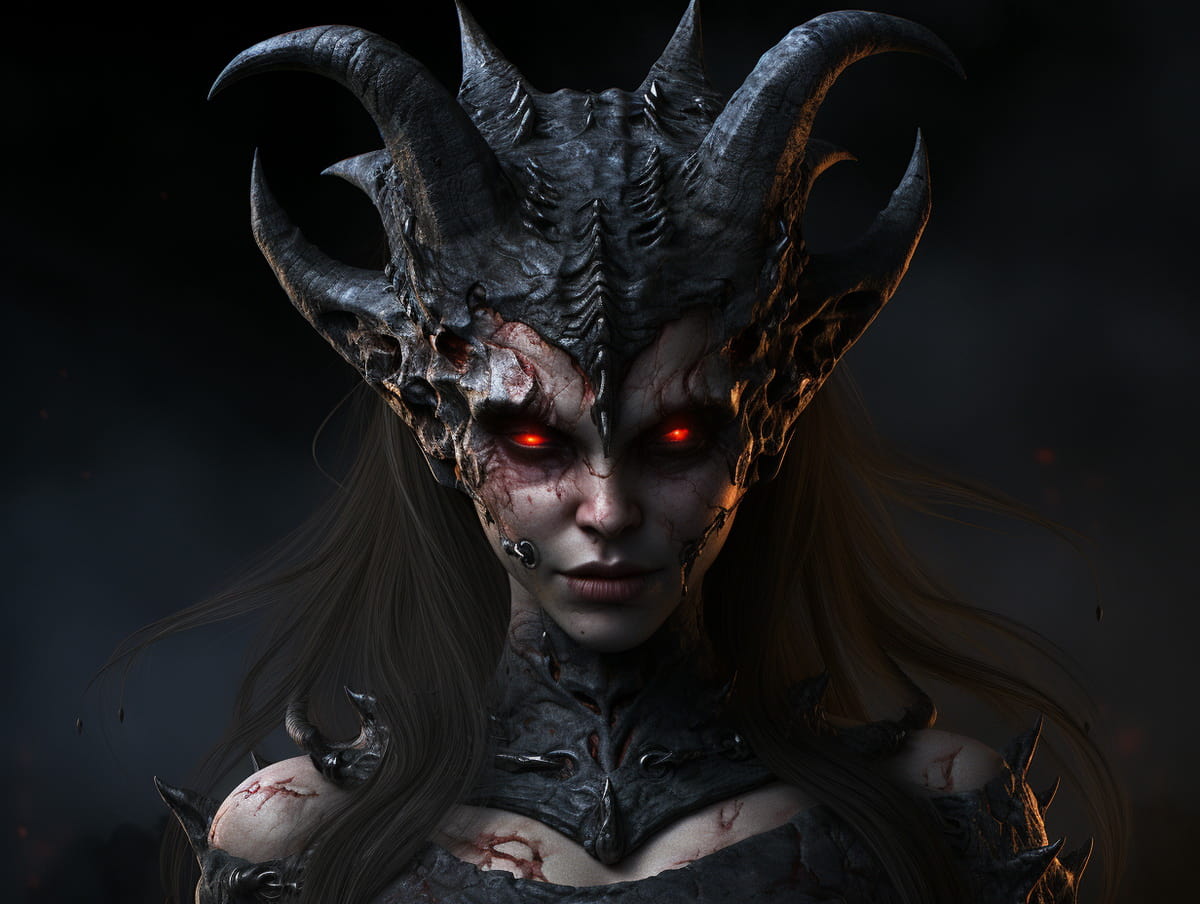Ah, gather ’round, fellow slayers of characters and connoisseurs of demonic names! Ever feel like your fantasy universe lacks a dash of feminine wickedness? Well, you’ve stumbled upon a goldmine. We’re plunging into the labyrinth of female demon names that range from religious manuscripts to folklore and everything unholy in between.
This is a one-stop shop for that devilish nameplate for your car or your next D&D character. Hold onto your rosaries; this is going to be a wild ride through the annals of mythology, religion, and even popular culture. 🤘
1. Lilith
Ah, Lilith, the OG of female demon names. She’s not just Adam’s scorned ex; she’s an entity of her own. Originating from Jewish folklore, Lilith is often considered the very first woman, who refused to be subordinate to Adam. “You’re not the boss of me” she seemed to say, and poof, she’s off making demonic babies known as Lilin.
But it’s not all doom and gloom. Lilith has become an icon of female empowerment in some circles. After all, it takes guts to say no to the first man on Earth, am I right? So, whether she’s a symbol of unruly women or demonic tendencies, Lilith is one powerful dame.
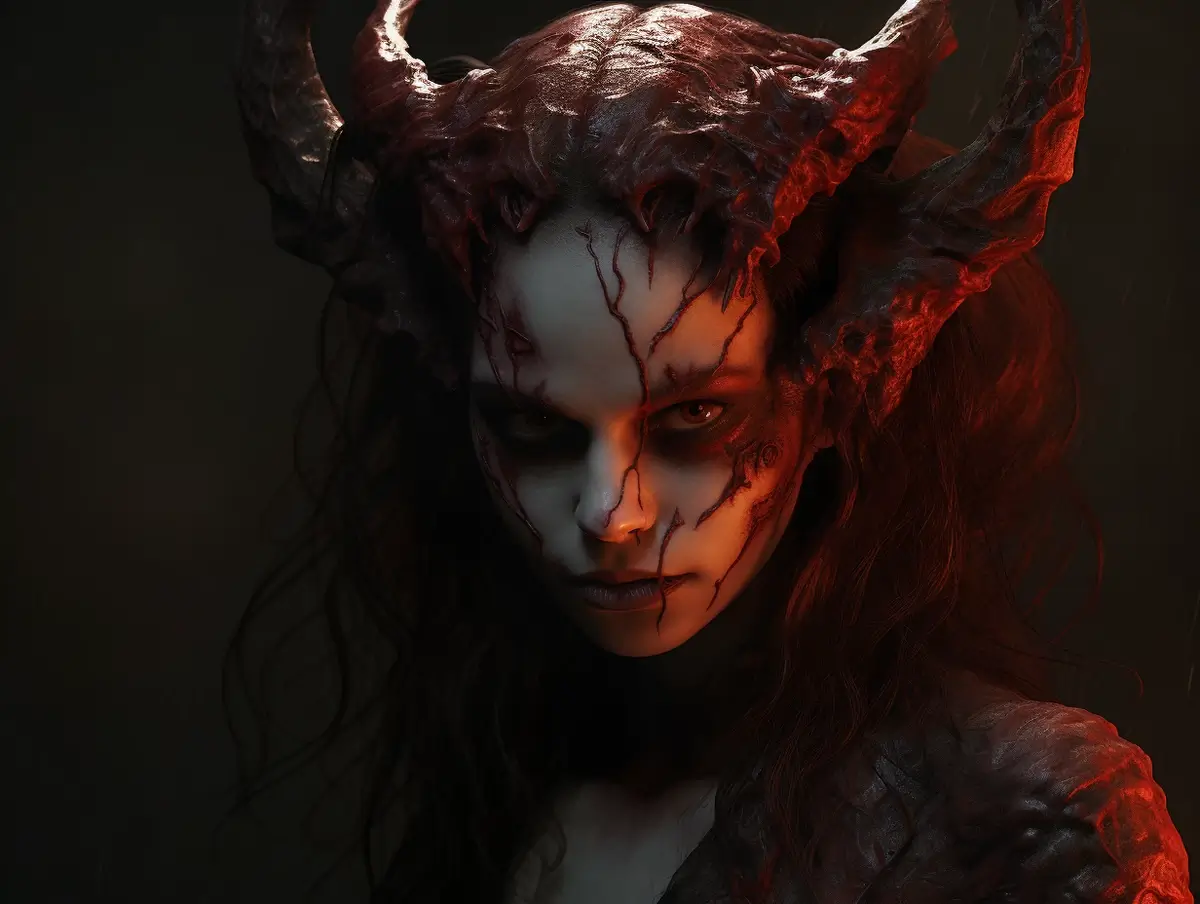
2. Agrat Bat Mahlat
You know how bands have side projects? Well, Agrat Bat Mahlat is kinda like that for Lilith. Another figure from Jewish mythology, she’s said to be one of Lilith’s posse, and one of the four angels of sacred prostitution. Yep, you heard that right.
Agrat Bat Mahlat is known to dance in the shadows of the night, and I don’t mean doing the moonwalk. She’s into much darker activities. Often considered a succubus, she manipulates men into dark deeds. So if you think you can handle her, think again; this demoness is not to be trifled with.

3. Jezebel
Oh, Jezebel, the name that has become synonymous with wicked women, but is she really deserving of her bad rep? Originating from the Hebrew Bible, Jezebel was a Phoenician princess who married King Ahab of Israel.
Her main fault? Being a devout follower of the Canaanite god Baal. In a predominantly monotheistic society, that was a big no-no. She wasn’t just an idol worshipper; she was fierce, independent, and possibly even a powerful woman in a man’s world. Nowadays, she’s often labeled as a demoness, perhaps undeservedly, but the name Jezebel remains popular for demonizing strong women.
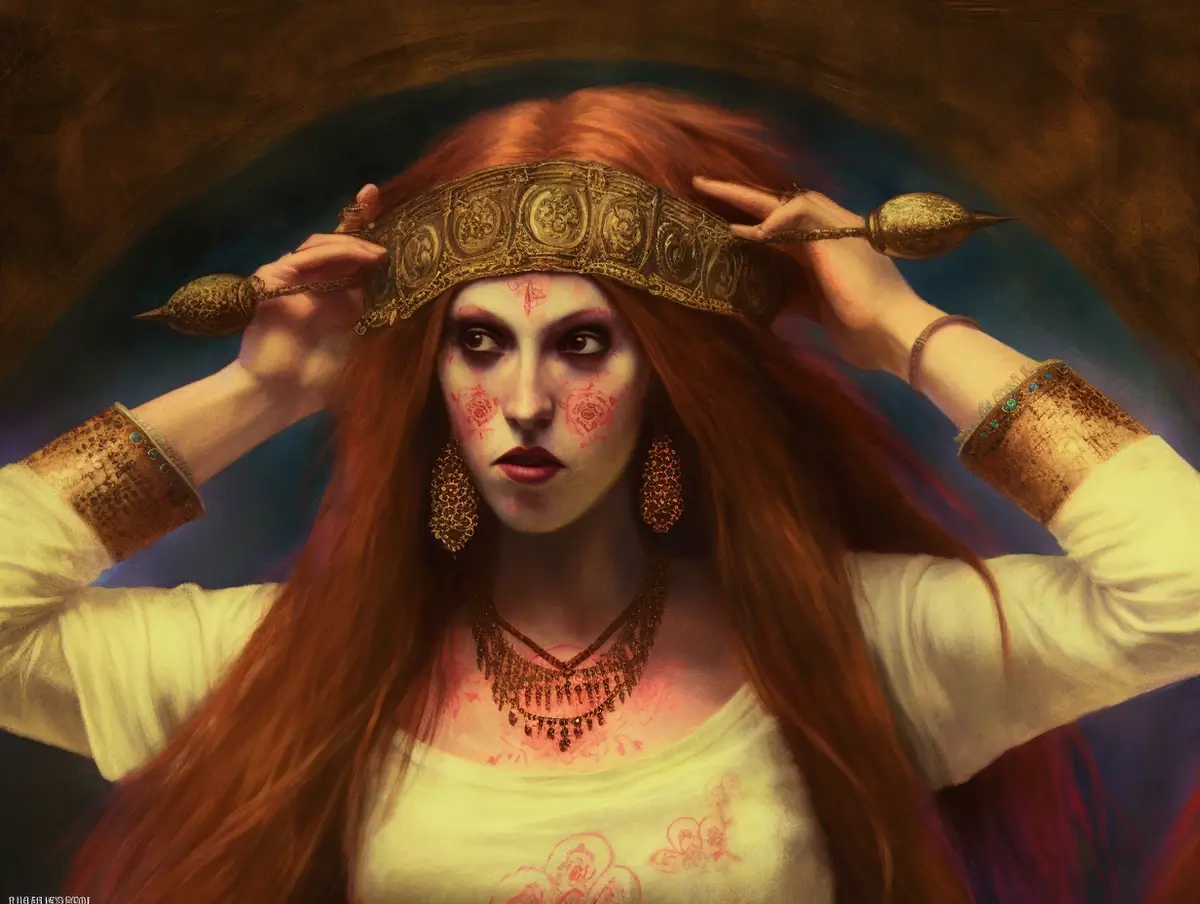
4. Lamia
If Lilith is the Joan Jett of the demon world, Lamia is the Janis Joplin—equally iconic but with her own brand of tragic. Originating from Greek mythology, Lamia was once a beautiful queen who became a demoness out of sheer tragedy. She lost her children and in her grief and madness, began to snack on other people’s kiddos. Talk about comfort eating gone horribly wrong!
Her name is often used to describe a category of demonic names known as “child-eaters.” Yikes! Yet, in other accounts, she’s not all bad; she’s more of a half-demon, symbolizing the complexities of human emotion. This is one gal you can’t just box into the “evil” category. Complex, like a fine (and forbidden) wine.

5. Abyzou
Next up is Abyzou, another name that’s deep-rooted in Jewish folk lore and Christian demonology. Ever heard of ’em? No? Well, she’s the one you call when you’re looking to blame someone for infertility and infant mortality. Not exactly the life of the party, this one.
Traditionally depicted as a powerful entity with serpent-like features, Abyzou is believed to suck the life out of newborns. She’s a reminder of the harsh realities of ancient times when infant mortality was sky-high and superstitions ran the town.
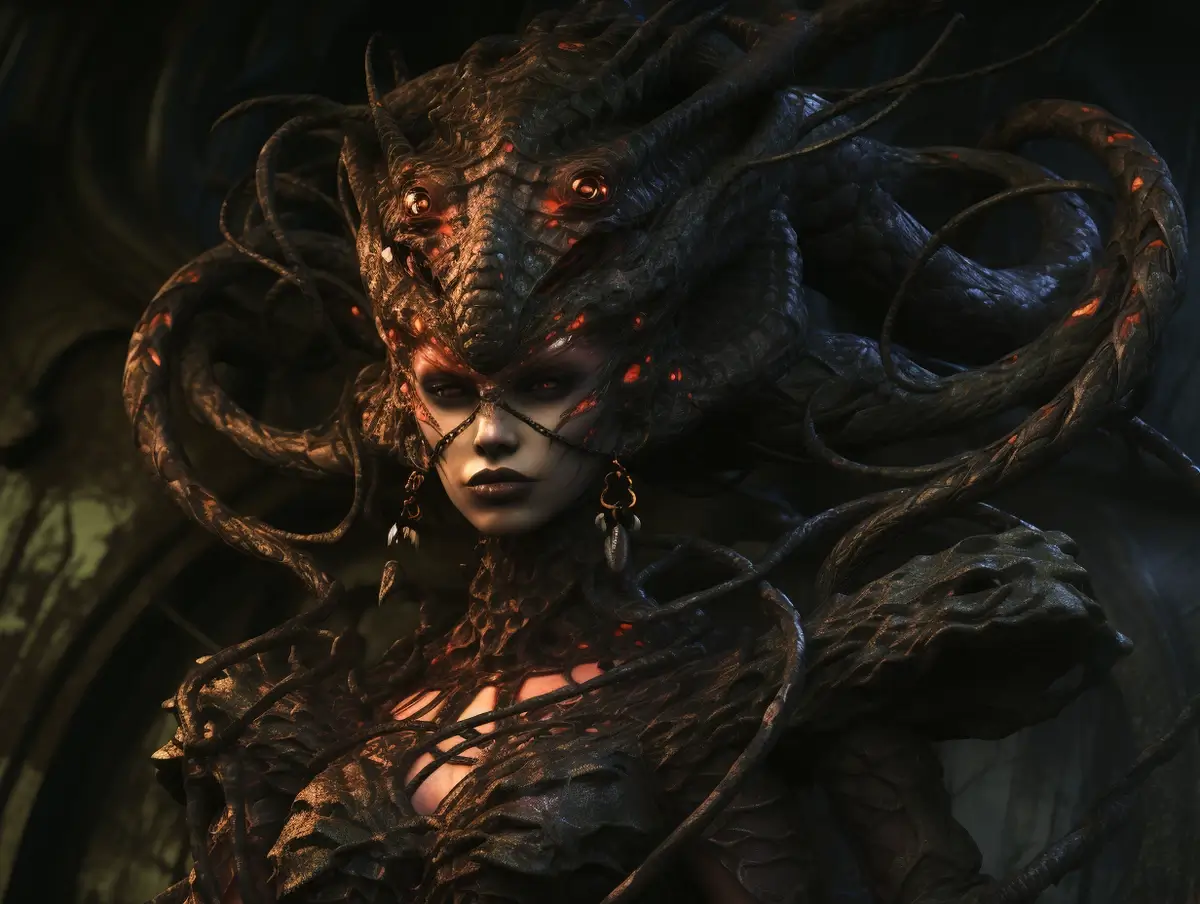
6. Medusa
Ah, Medusa, the poster girl of bad hair days. Hailing from Greek mythology, she is probably the most recognizable name on this list. And let’s get one thing straight; she wasn’t always a monster. Originally a beautiful maiden, she got turned into a Gorgon as punishment.
While not a demon in the strict sense, her transformation into a monster has seen her likened to demonic figures in later interpretations. With snakes for hair and a gaze that turns you to stone, she is a powerful symbol of female wrath and transformation.
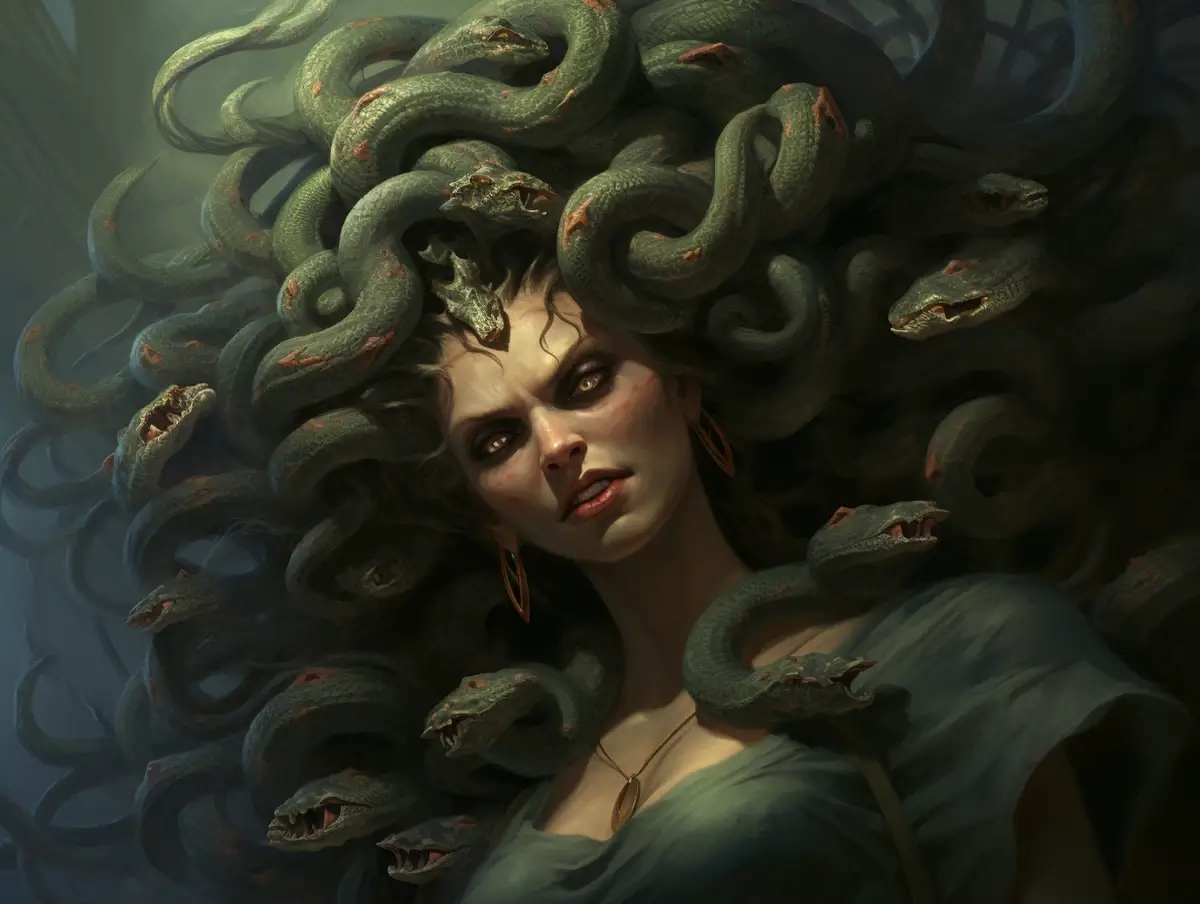
7. Hecate
Now, let’s delve into Hecate, a name straight outta Greek mythology that’s bound to make you wonder whether you should fear her or honor her. Hecate is a goddess often associated with the darker aspects of the world—magic, witchcraft, and the moon.
Technically, she’s not purely a demoness but rather a deity with complex traits. She’s the goddess of all witches, making her a significant figure in pagan practices. Although generally not evil, her darker aspects have led people to sometimes label her as a demoness. She embodies the blend of divine and demonic, and let me tell you, it’s a cocktail not for the faint-hearted.
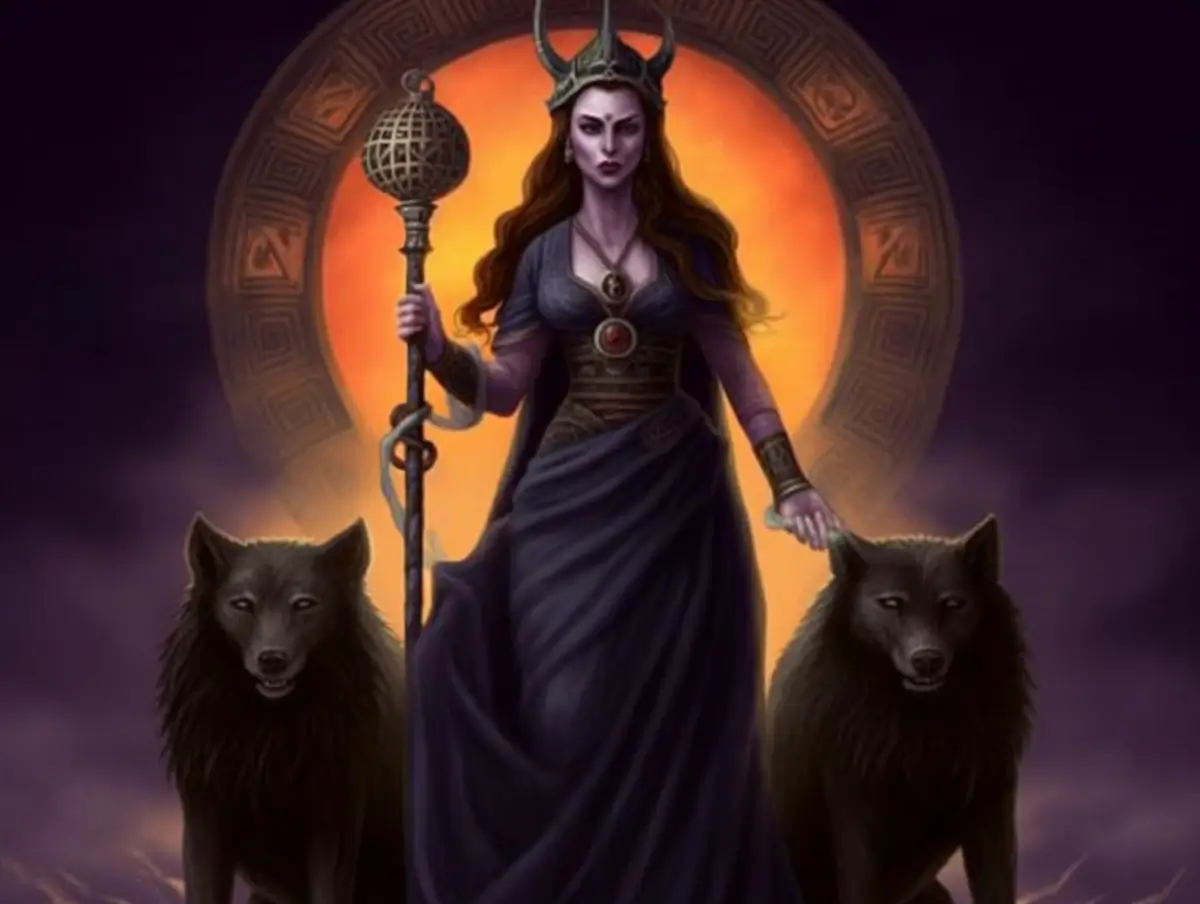
8. Hel
Let’s hop over to the frosty terrains of Norse mythology for this next one. Meet Hel, and no, that’s not a typo. Hel is the overseer of the realm that bears her name—also not Hell, but Hel, a realm of the dead in Norse mythology. She’s the half-dead and half-demon daughter of Loki, making her a combo of ‘looks can kill’ and ‘looks can… confuse?’
Her dual nature embodies the eternal struggle between life and death. Like her dad, Hel has a knack for mischief, although she’s more into eternal damnation than pranks. She’s a queen in her own right, a demon queen if you will, governing those who didn’t die valiantly in battle.
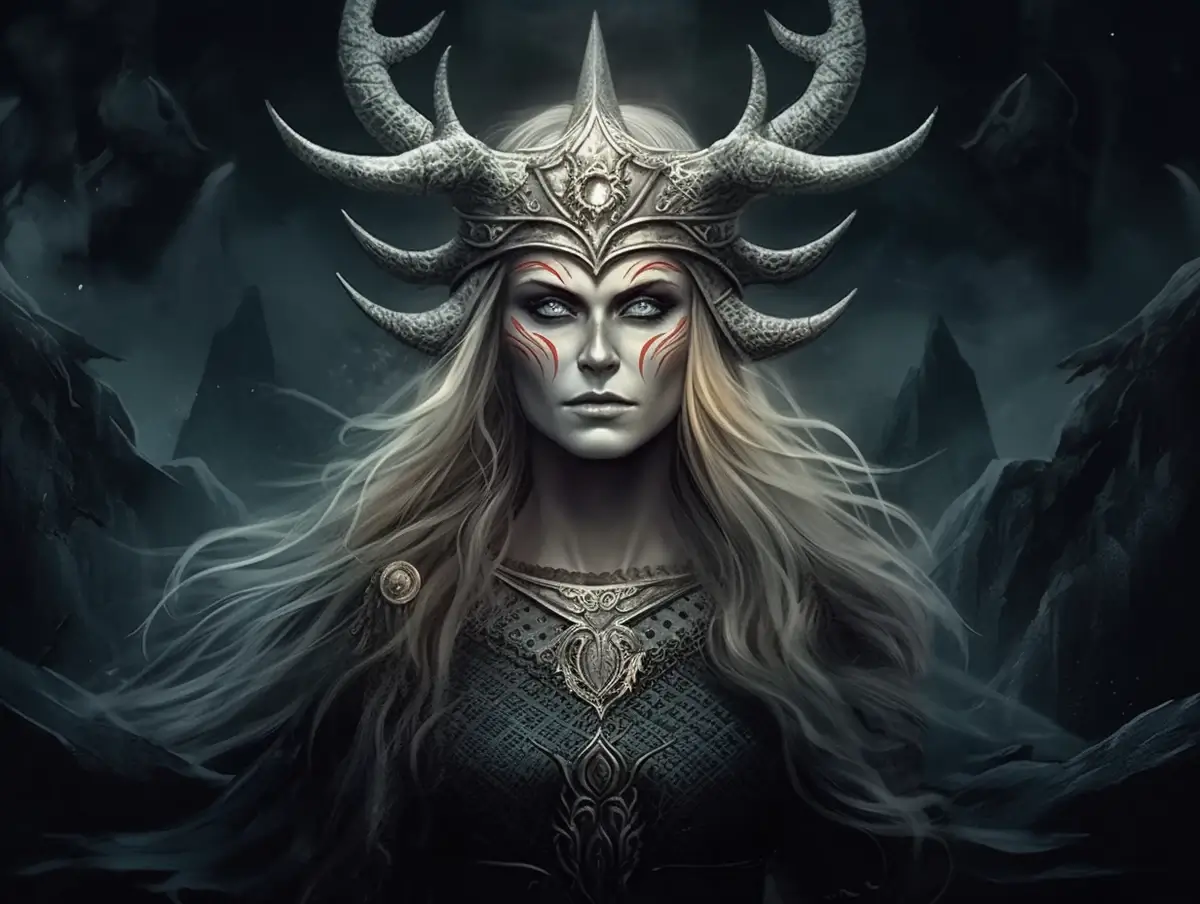
9. Lamashtu
Switching gears to ancient Mesopotamia, we meet Lamashtu. This demoness is the stuff nightmares are made of—literally. She’s blamed for everything from miscarriages to killing infants. Talk about a multi-tasker!
She’s no one-trick pony; Lamashtu also has the power to contaminate water and crops. People back then would use amulets and incantations to ward her off. A seven-headed hydra with a lion’s body? You’d want to keep her away too. Needless to say, she’s one of the most powerful figures in Mesopotamian lore.
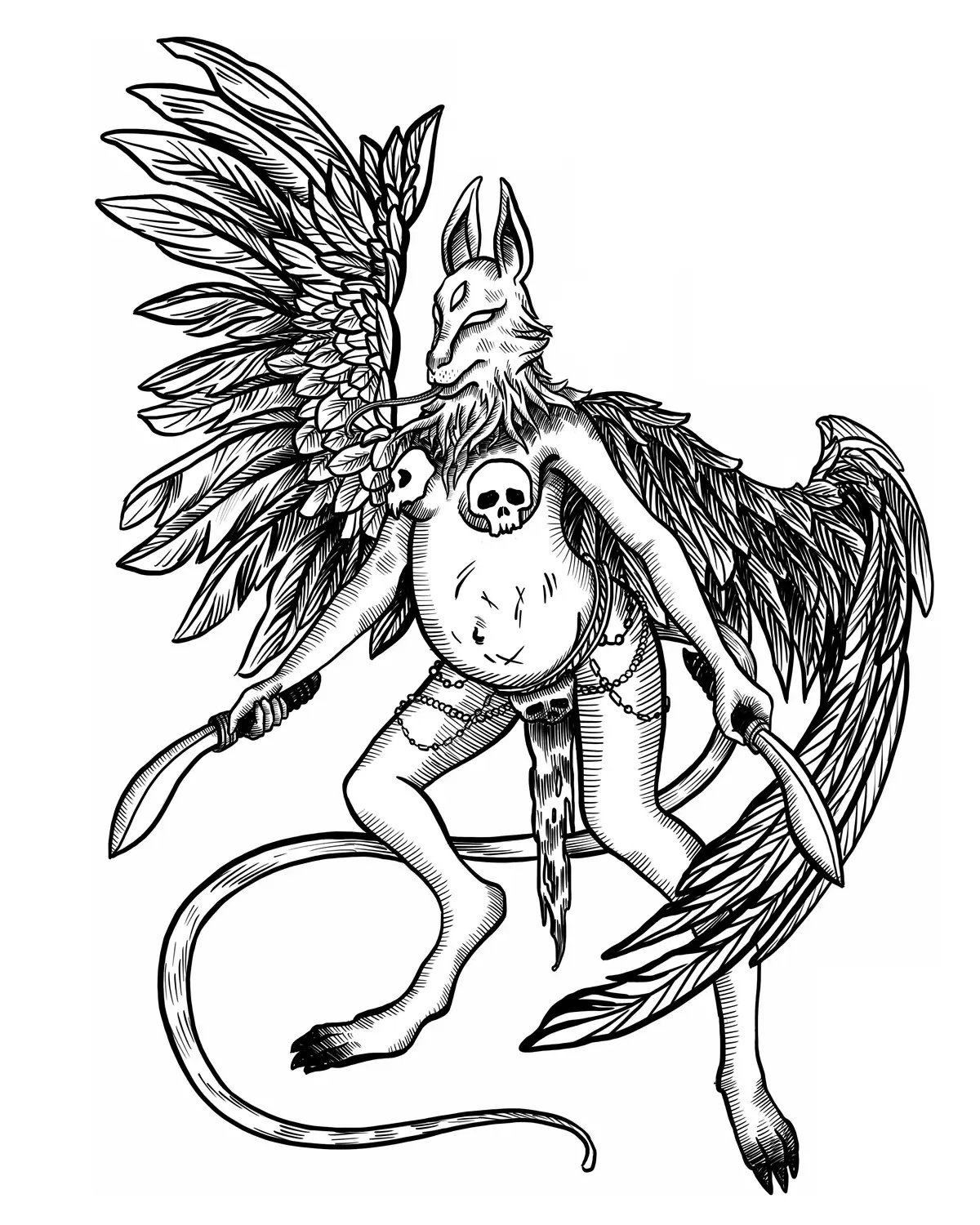
Elizaveta Gubanova / CC BY-NC-SA 4.0
10. Eisheth Zenunim
Let’s journey back to Jewish mythology to meet Eisheth Zenunim, another femme fatale from Lilith’s gang. Eisheth is known for her stunning beauty, but don’t let the pretty face fool you. She’s one of the wives of the archangel Samael, which technically makes her a demoness-in-law to Lilith.
She’s not just arm candy though; Eisheth is a succubus and vampire, wandering at night to seduce men and suck their blood. If you’re looking for cool female demon names, her name literally translates to “Woman of Whoredom,” and she owns it like a boss.
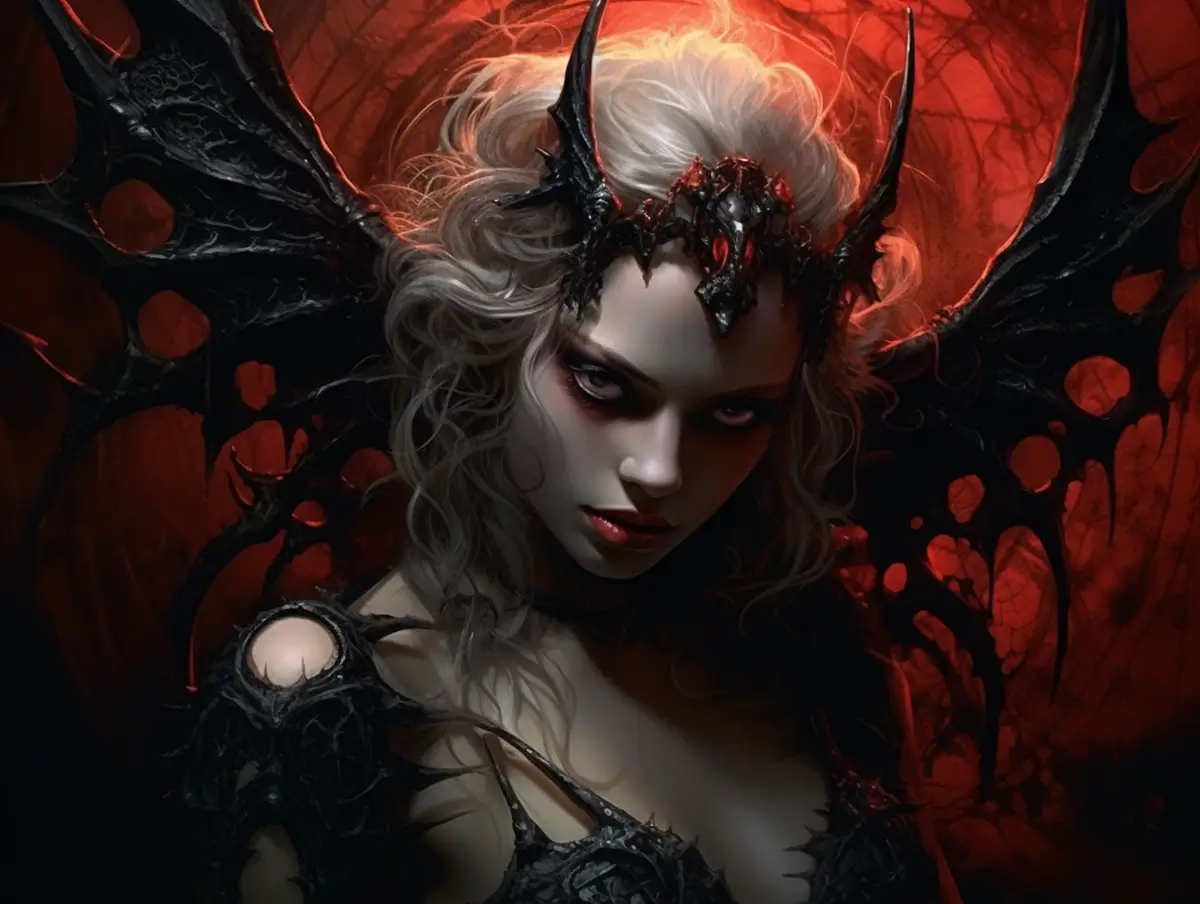
11. Astarte
For our next entrant, let’s swing by ancient Canaan where Astarte reigned supreme. Often equated with the Babylonian goddess Ishtar, Astarte was initially a deity of fertility and sexuality. But as is often the case with powerful women in history, she got a demonic downgrade in Abrahamic religions.
In some interpretations, Astarte has been associated with war and referred to as a demoness. She’s also sometimes identified with the planet Venus. Talk about a celestial downgrade! From goddess to demoness, Astarte’s story shows how interpretations can be more fickle than a cat on a hot tin roof.
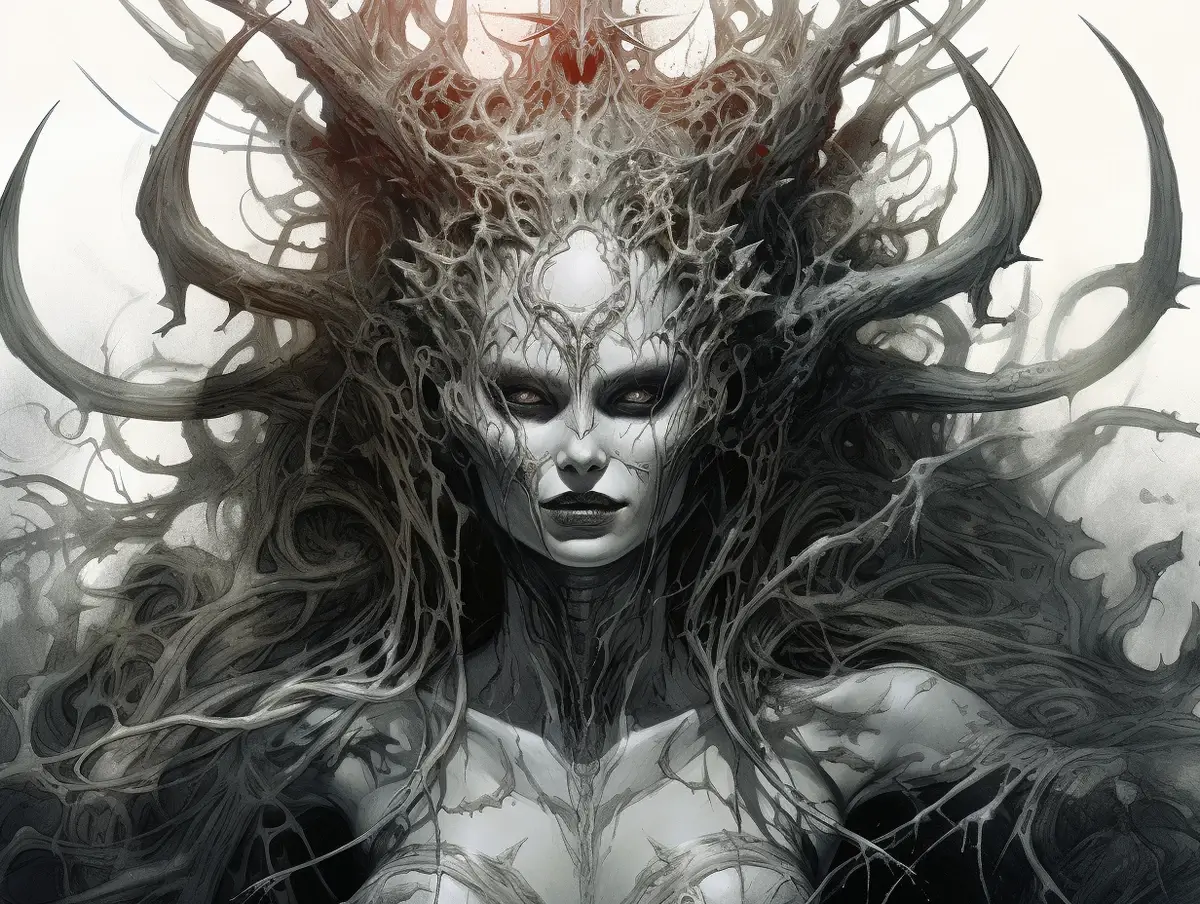
12. Asmodeus (Female Aspect)
Wait a minute, Asmodeus? Isn’t that a guy? Well, yes, in most texts he is. But guess what, this dude has a female aspect too. That’s right; in some religious and mystical traditions, Asmodeus can swing both ways—gender-wise. The female aspect of Asmodeus is more about allure, seduction, and subtlety. The male side is brutish by comparison. Talk about a well-rounded relationship with oneself!
The female aspect brings us a different flavor of the same sin—lust. While not a separate entity, this side of Asmodeus highlights the yin to his yang, showing that even demons aren’t immune to a little gender fluidity.
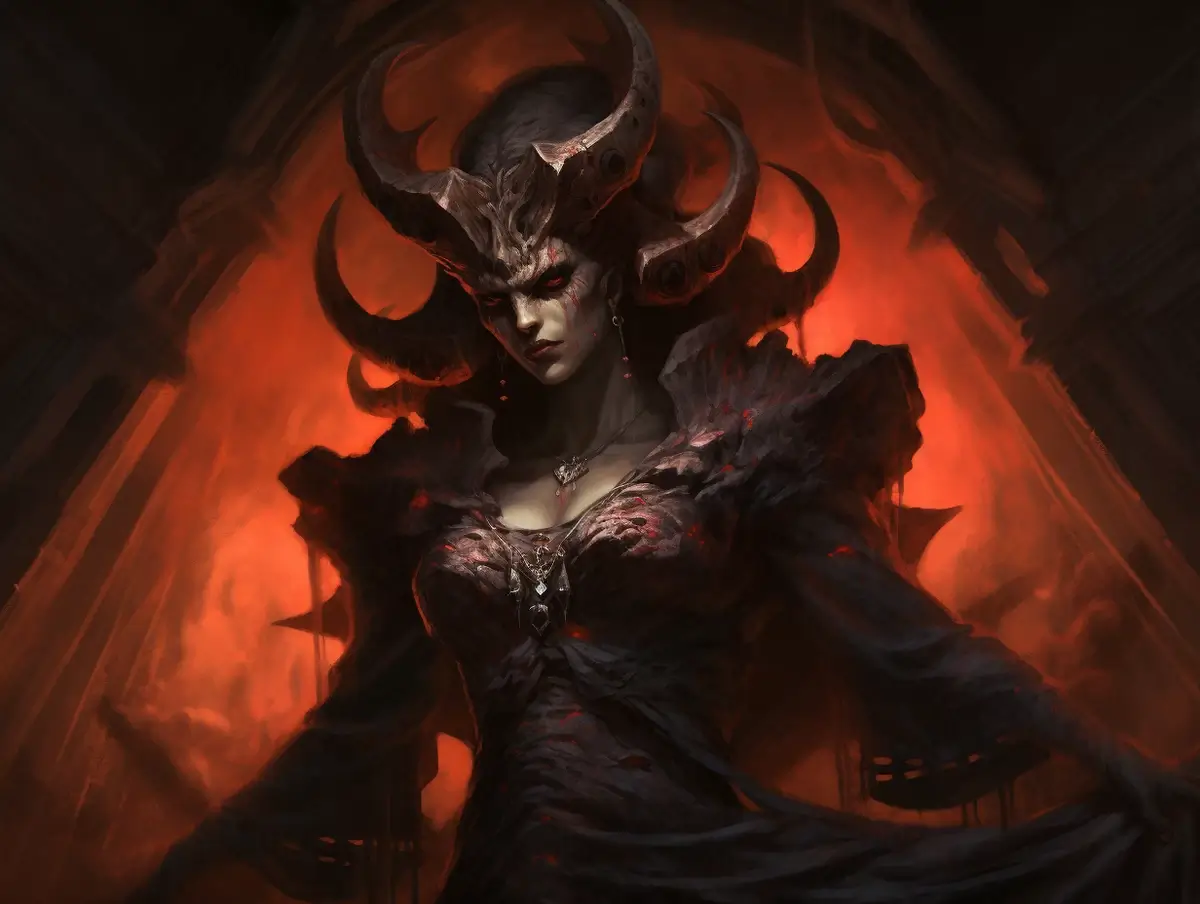
13. Batibat
Get cozy, because next up is Batibat, and she’s coming to you from Filipino folk lore. A far cry from the high-octane demoness characters we’ve seen, Batibat likes to keep things low-key by disguising herself as a tree. But don’t let the botanical look fool you; if you cut her tree down to make a pillow, let’s just say, you’re in for some literal nightmares.
The Batibat is a nocturnal creature, and her method of killing? Sitting on the chest of her sleeping victims until they suffocate. Talk about death by comfort!

Image source: phcorner.net
14. Marquise de Montespan (claimed to be a witch, symbol of female demon in popular culture)
Marquise de Montespan, sounds classy, doesn’t it? Born Françoise-Athénaïs de Rochechouart de Mortemart, she was a mistress to King Louis XIV of France. While not technically a demoness, her affiliation with dark magic has made her a symbolic female demon in popular culture.
She’s even been accused of participating in “The Affair of the Poisons,” a scandal involving poisonings and witchcraft that rocked the French court. Nowadays, she’s often evoked in literature and media as an example of how the lust for power can drive one to dark corners.

15. Mara
Coming straight out of Scandinavian folklore, Mara is known for causing sleep paralysis and nightmares. She’s also a figure in Buddhism, where she tried to tempt Buddha himself. The name “Mara” might sound sweet, like a grandma who’d knit you a sweater, but make no mistake, she’s in the business of weaving nightmares.
Whether it’s sitting on your chest while you sleep or whispering evil thoughts, Mara is an embodiment of mental and physical disturbances. Her name even became the etymological root for the word ‘nightmare.’
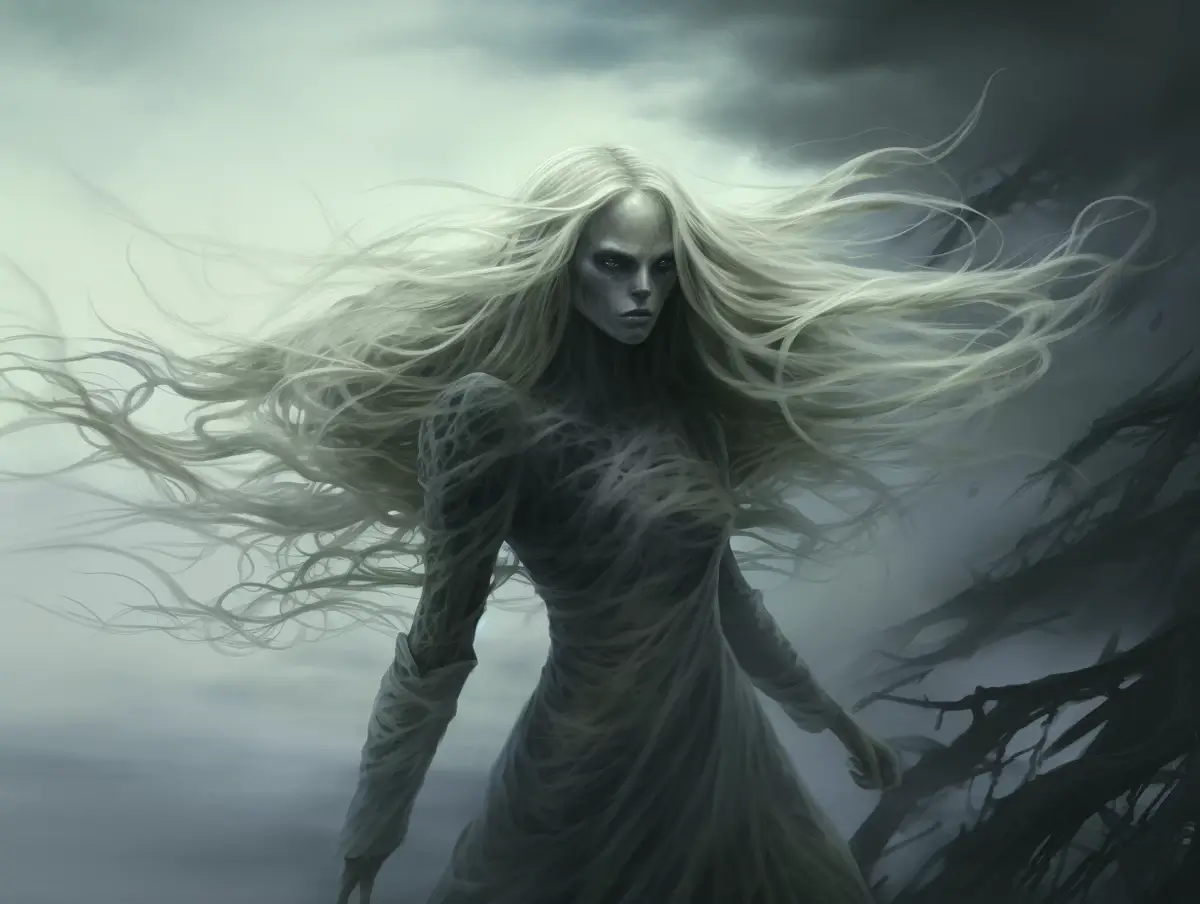
16. Aeshma (Female Aspect)
Alright, we’re headed to ancient Persia, where Aeshma hails from. Primarily seen as a male demon of wrath in Zoroastrianism, Aeshma also has a little-known female aspect. This aspect is associated with the darker tendencies in humans—vengeance, lust, and cruelty.
She brings out the “see red and break things” in us. And while Aeshma is not purely female, acknowledging this aspect gives us a 360-degree view of what makes this demon tick. Wrath isn’t gender-specific, folks.
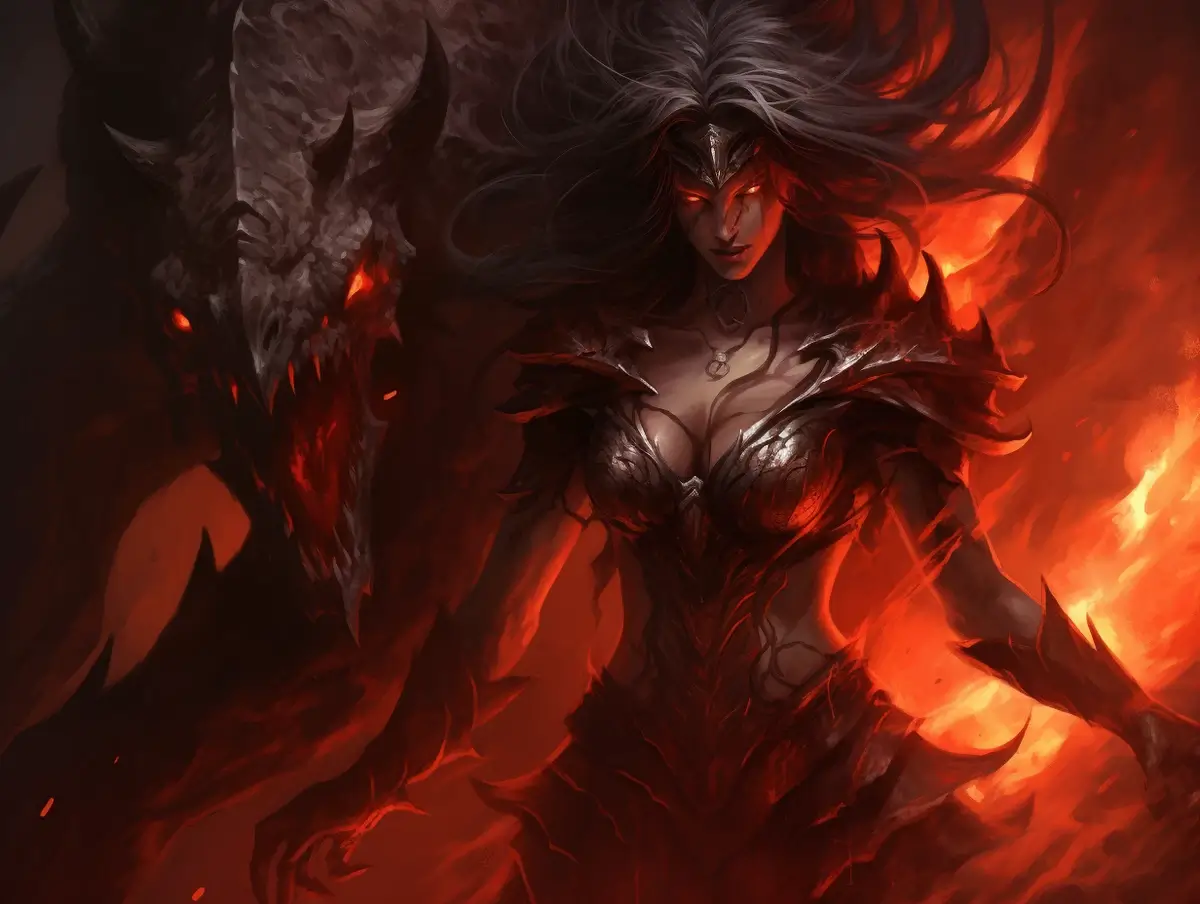
17. Allatu
Hailing from Mesopotamian mythology, specifically the Akkadian and Babylonian pantheons, Allatu is your go-to underworld goddess. While not exactly a demon in the fire-and-brimstone sense, she’s no saint either.
Tasked with afterlife management, this powerful deity judged souls and laid down cosmic laws. In ancient times, you’d send a prayer her way, hoping never to cross paths with her in the afterlife.
If you’re looking for a badass female demon name with an exotic origin story and job description that’s more complex than “soul tormentor,” Allatu is your gal. Whether you’re diving into mythology, pondering religion, or in search of a muse for your fantasy epic, Allatu’s got the gravitas you’re looking for.
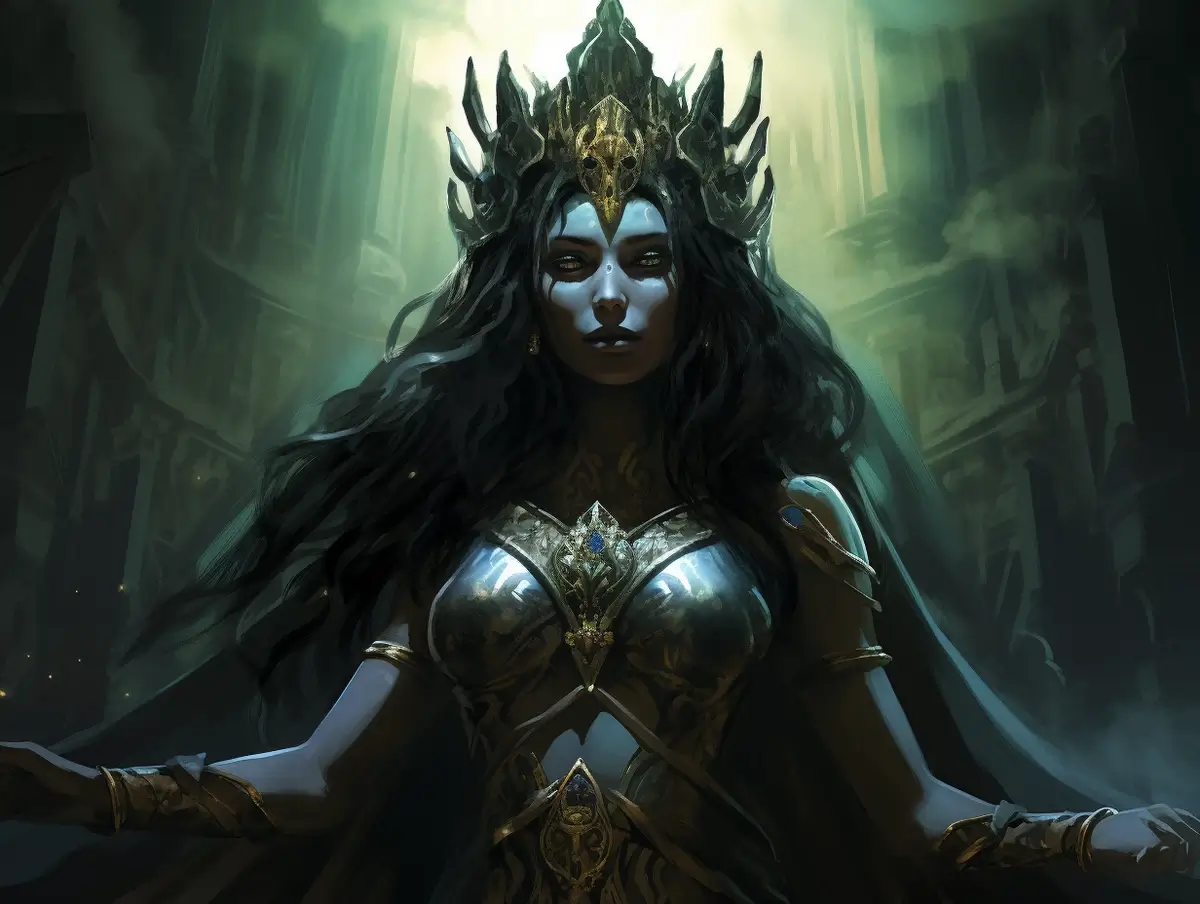
18. Nure-onna
Let’s cross over to Japan for a taste of the exotic. Nure-onna is a vampiric creature part woman, part snake. She’s got the beauty to lure you in and the fangs to make you regret it. Often depicted with a snake’s body and a woman’s face, this character from Japanese folklore is the stuff of creepy legends.
While not strictly a demon, she’s more of a Yokai—a term in Japanese folklore for supernatural creatures. Nure-onna embodies the darker, more predatory aspects of femininity.
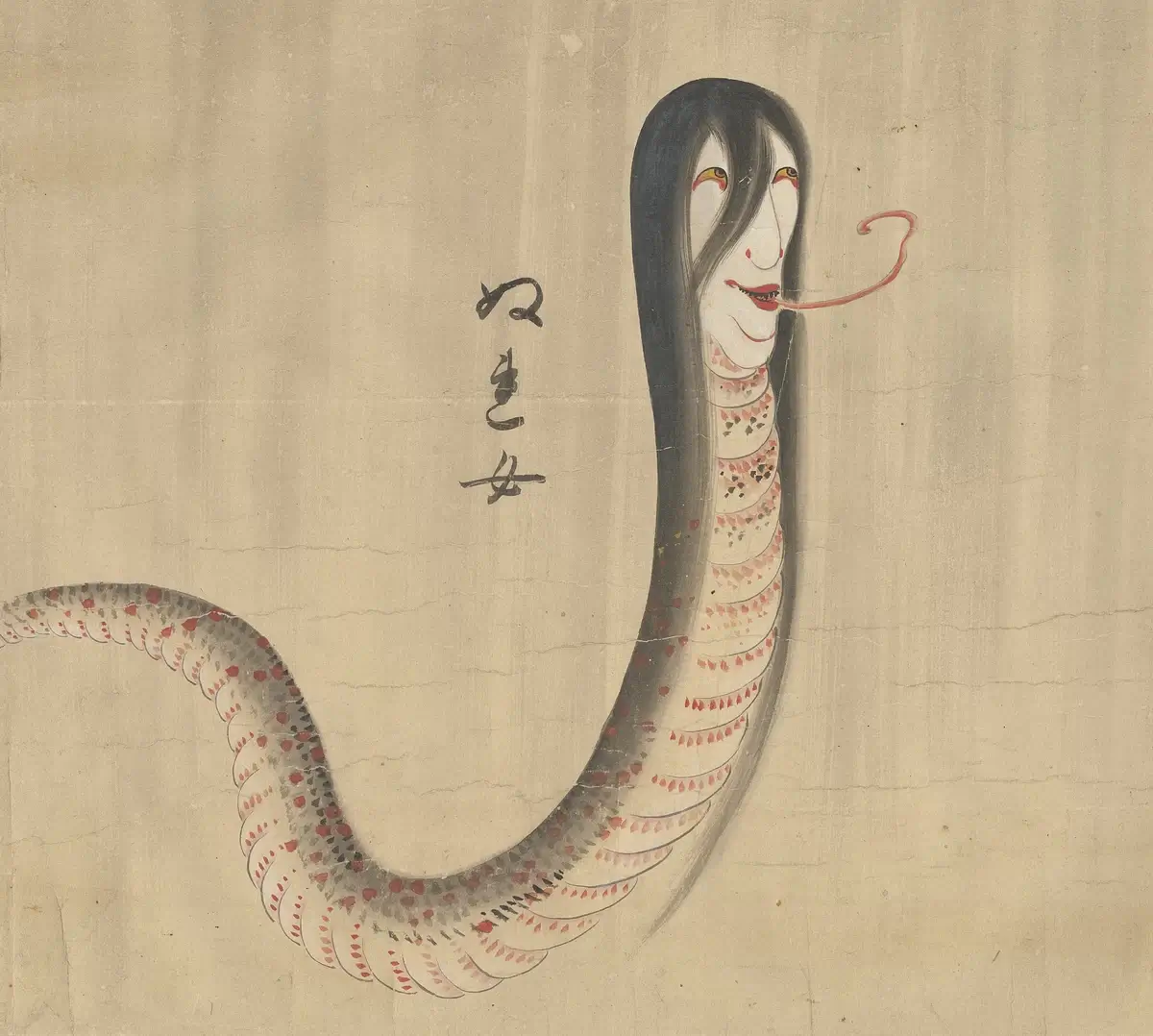
Brigham Young University / Wikimedia Commons
19. Baalat
Time to take it old school—way old school. Baalat is the female counterpart to Baal, the ancient Canaanite god. While not strictly demonic in original lore, she was demonized in subsequent Judeo-Christian texts. She’s often depicted as the goddess of love and war, which sounds like a dangerous combo if you ask me.
The name “Baalat” literally translates to “Lady” or “Mistress,” and boy, does she wear those titles well. Whether you look at her as a demonized deity or a demon proper, her impact on religion and mythology can’t be denied.
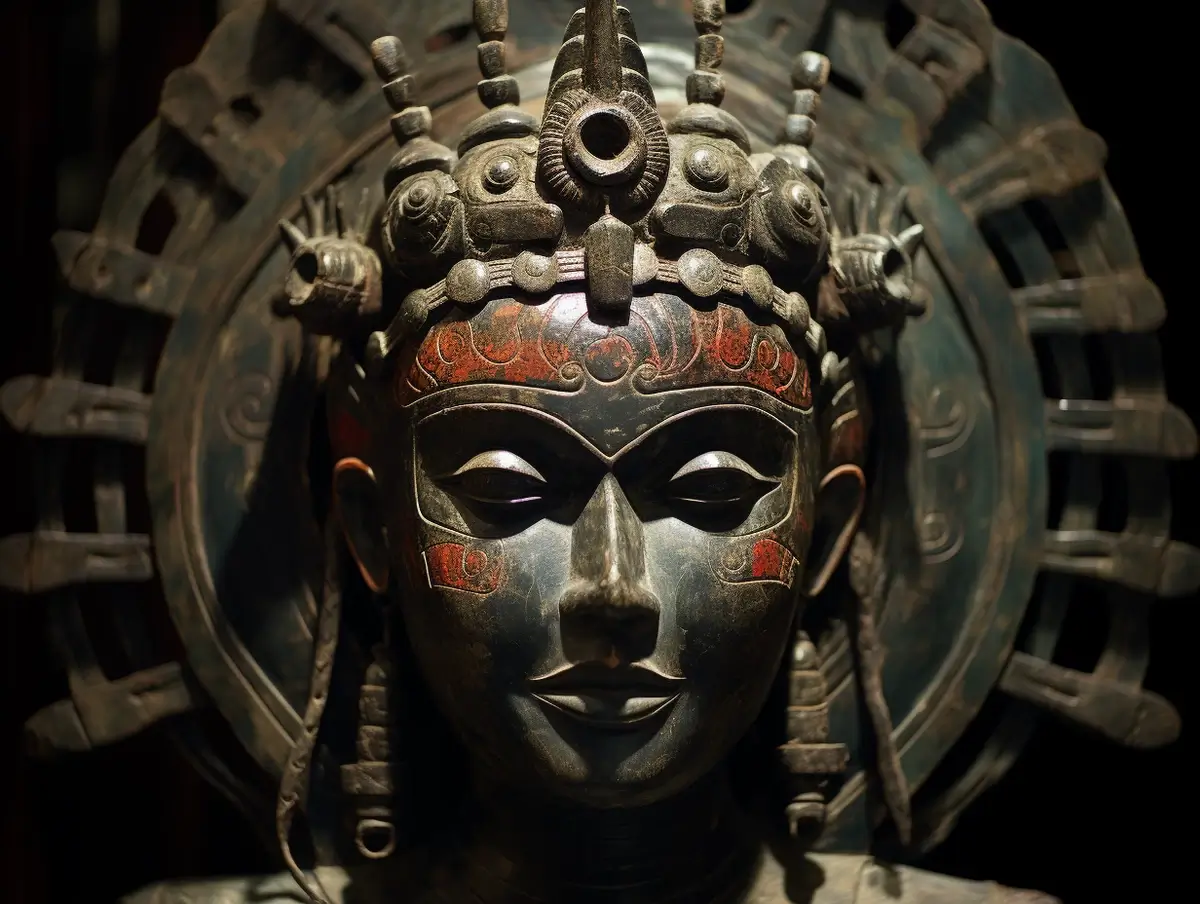
20. Rangda
Pack your bags, folks; we’re off to Bali! Rangda is the demon queen of the Leyaks in Balinese mythology. With her long, flowing hair and a face only a mother could love, she’s the epitome of fright. She leads her evil witches against Barong, the leader of the good guys. It’s like a celestial game of chess, only way spookier.
Rangda is a complex figure, both feared and revered. While she may eat children and lead armies of witches, she is also considered a protective force by some. Talk about a complicated relationship status.
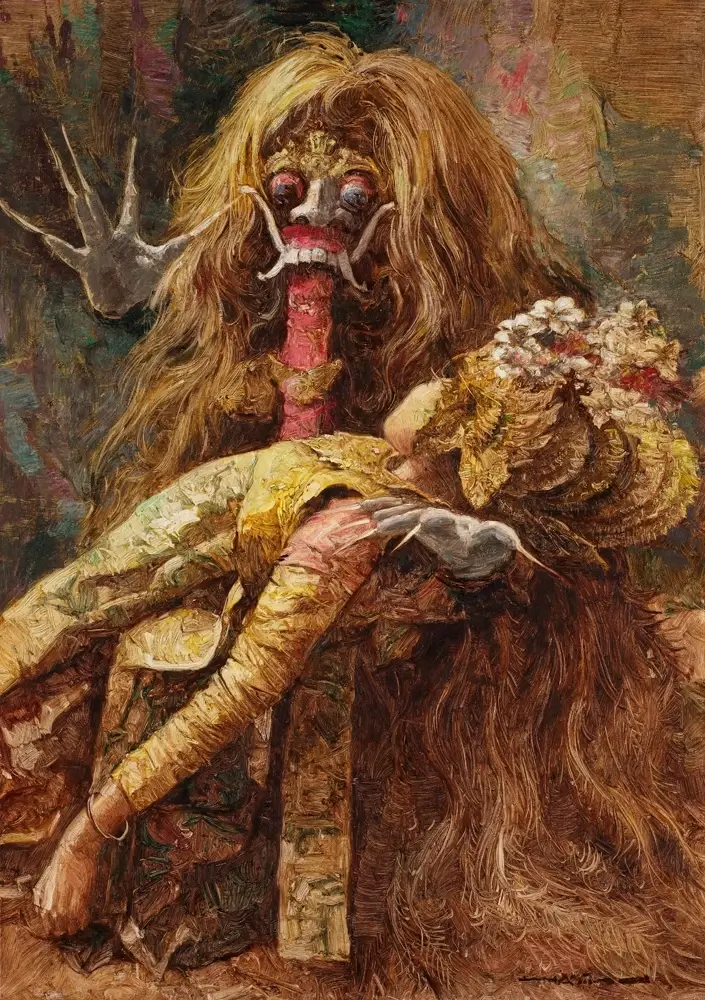
Image source: mutualart.com
21. Banshee
From Bali, we zoom over to Ireland to meet the Banshee, a spirit from Irish folklore. Not technically a demon, but hey, if you heard her wail, you’d probably call her demonic too. She appears to foretell death, her scream a haunting melody that’ll send shivers down your spine.
The Banshee is one of those characters deeply rooted in folk lore, a spectral woman who could be young or old, but always unsettling. While her appearance can vary, her message is always the same: someone’s about to clock out.
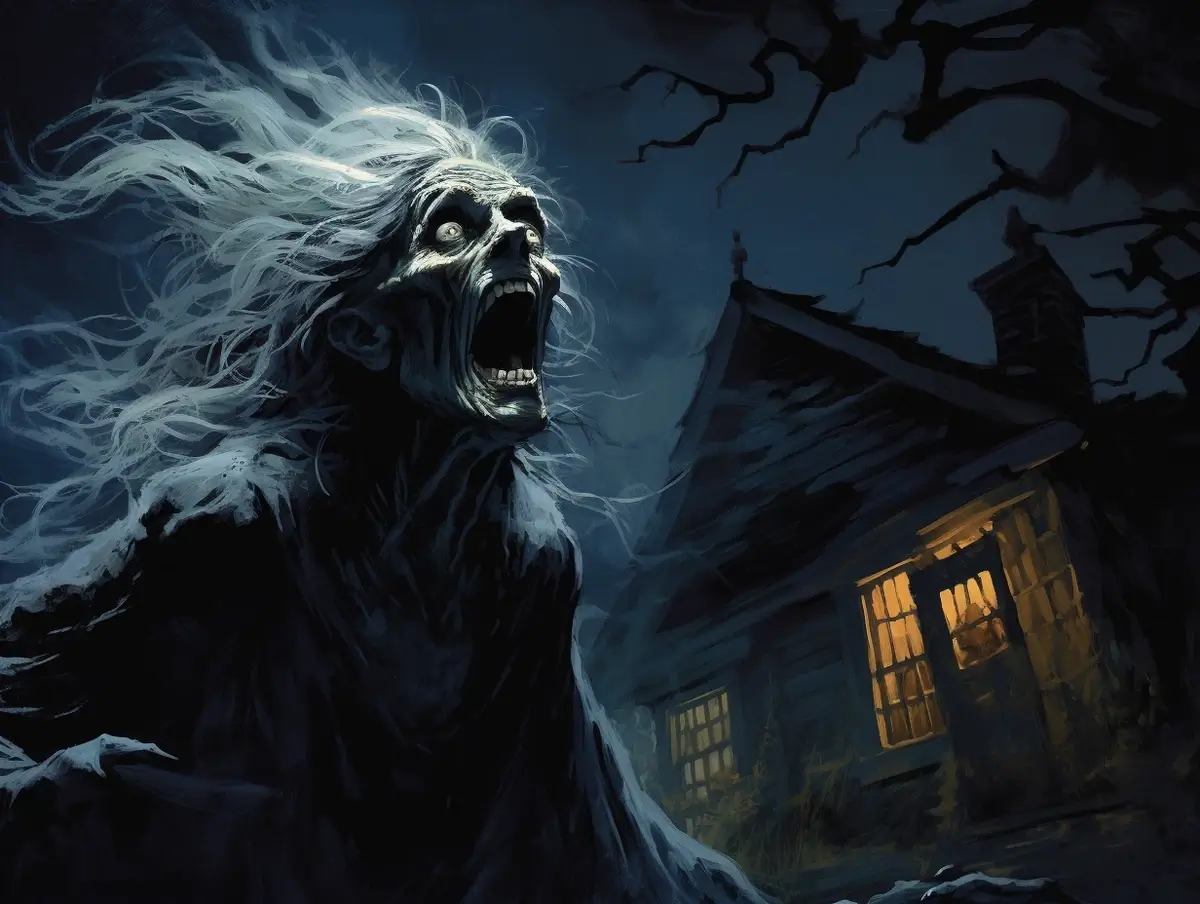
22. Pandora (depicted as demonic in some mythologies)
And finally, let’s head back to Greece to unwrap the story of Pandora. You probably know her best for that box she wasn’t supposed to open. While not a demon in the traditional Greek telling, she’s sometimes demonized in later versions of the story as the one who released all evils into the world.
Remember when you were told not to touch something as a kid, and then you did, and it was a disaster? Multiply that by a million, and you’ll get why some view Pandora as demonic. Her name means “all-gifted,” which, in hindsight, might be a touch ironic.
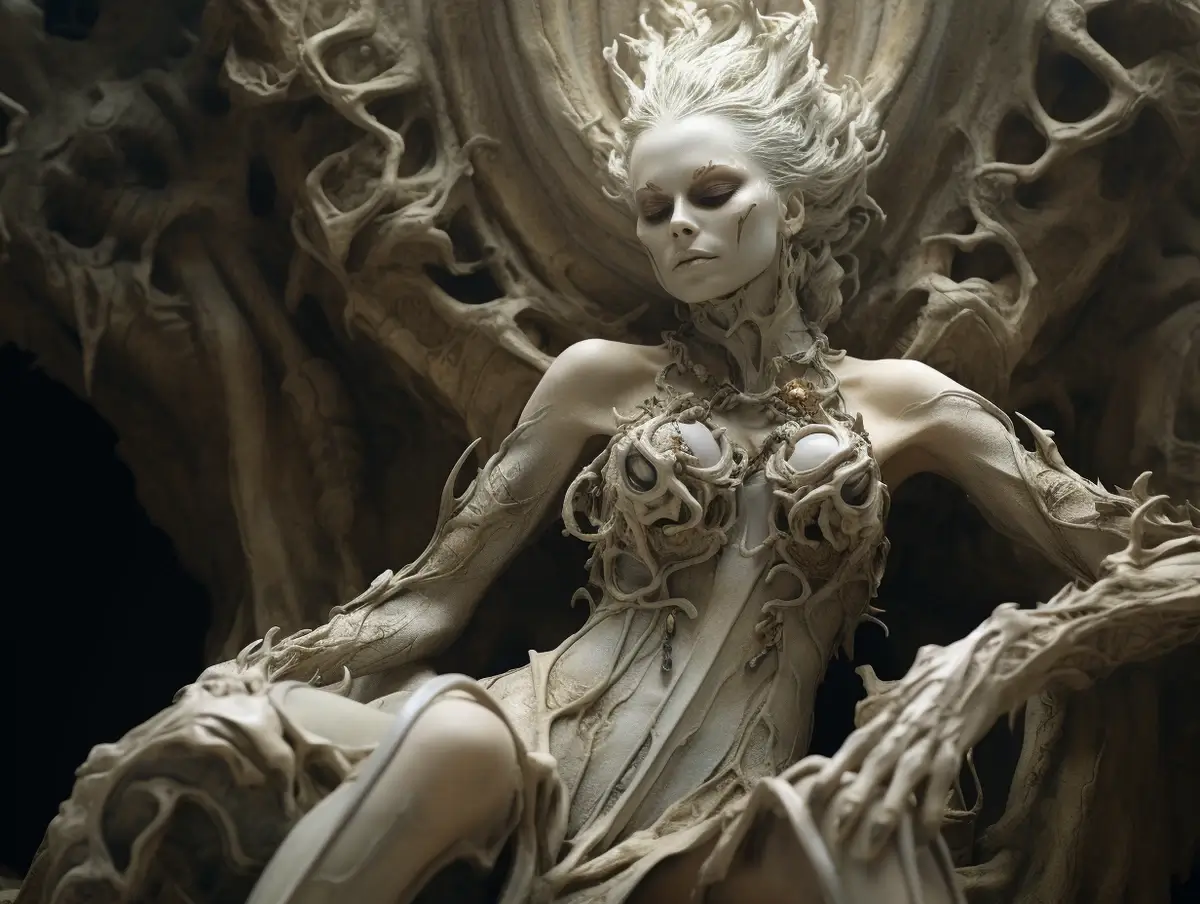
23. Circe
Let’s kick off with Circe, the OG enchantress who could turn men into pigs with a flick of her wand. Coming straight out of Greek mythology, she’s the daughter of Helios, the Sun god, and the ocean nymph Perse. While not necessarily a demon, she embodies many qualities we associate with dark, magical women.
Whether you see her as a complex feminist icon or a malevolent sorceress, her name has become synonymous with irresistible but dangerous allure. Sure, she’s not handing out apple pies and cuddles, but she’s a fascinating figure in the world of mythology.
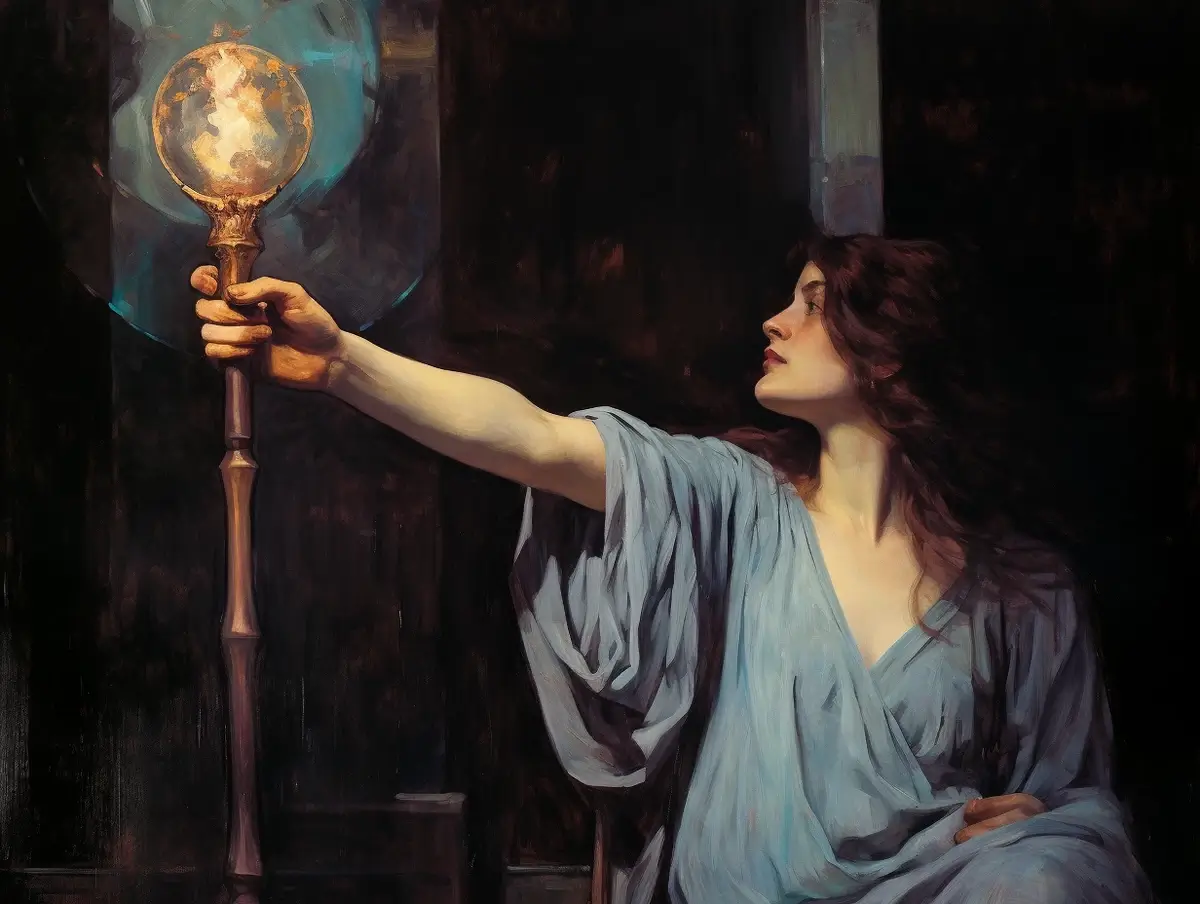
24. Izanami
Alright, hold on to your chopsticks because we’re venturing into Japanese mythology with Izanami, the goddess of both creation and death. She and her hubby Izanagi created the Japanese islands, but things took a dark turn when she died giving birth to the fire god. Not the mother’s day gift you’d hope for.
Trapped in Yomi, the land of the dead, she becomes a rotting, demonic figure. If your idea of a power couple is one where the wife tries to trap the husband in the underworld, Izanami and Izanagi are #CoupleGoals.
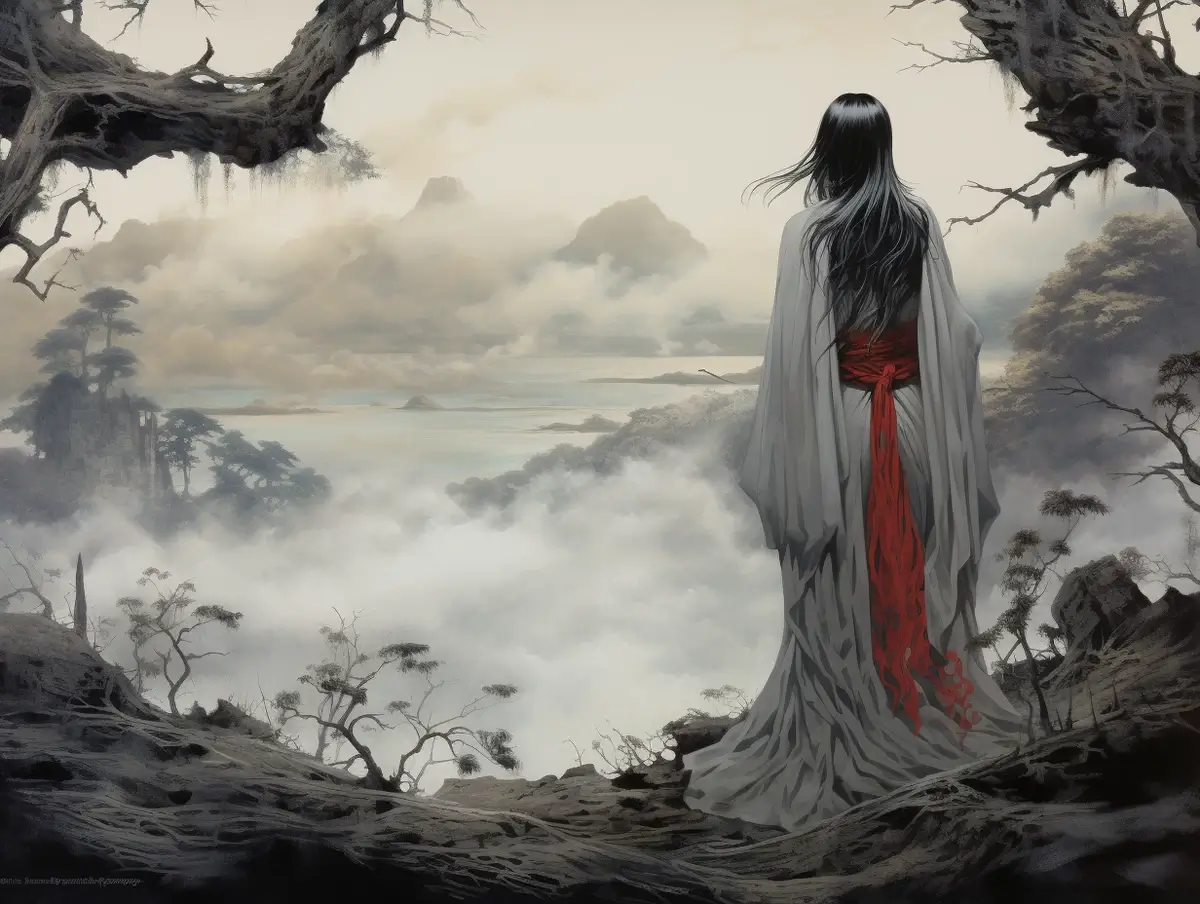
25. Choronzon (Female Aspect)
Choronzon is often considered a male demon, particularly in occult circles following Aleister Crowley. But did you know this entity has a female aspect as well? Representing chaos and dispersion, Choronzon is said to be the guardian of the Abyss, the empty void.
As a figure of chaos, the female aspect of Choronzon embodies the dissolution of form, a force of entropy and disintegration. Think of her as the universe’s blender, mixing things up in the most terrifying way possible.
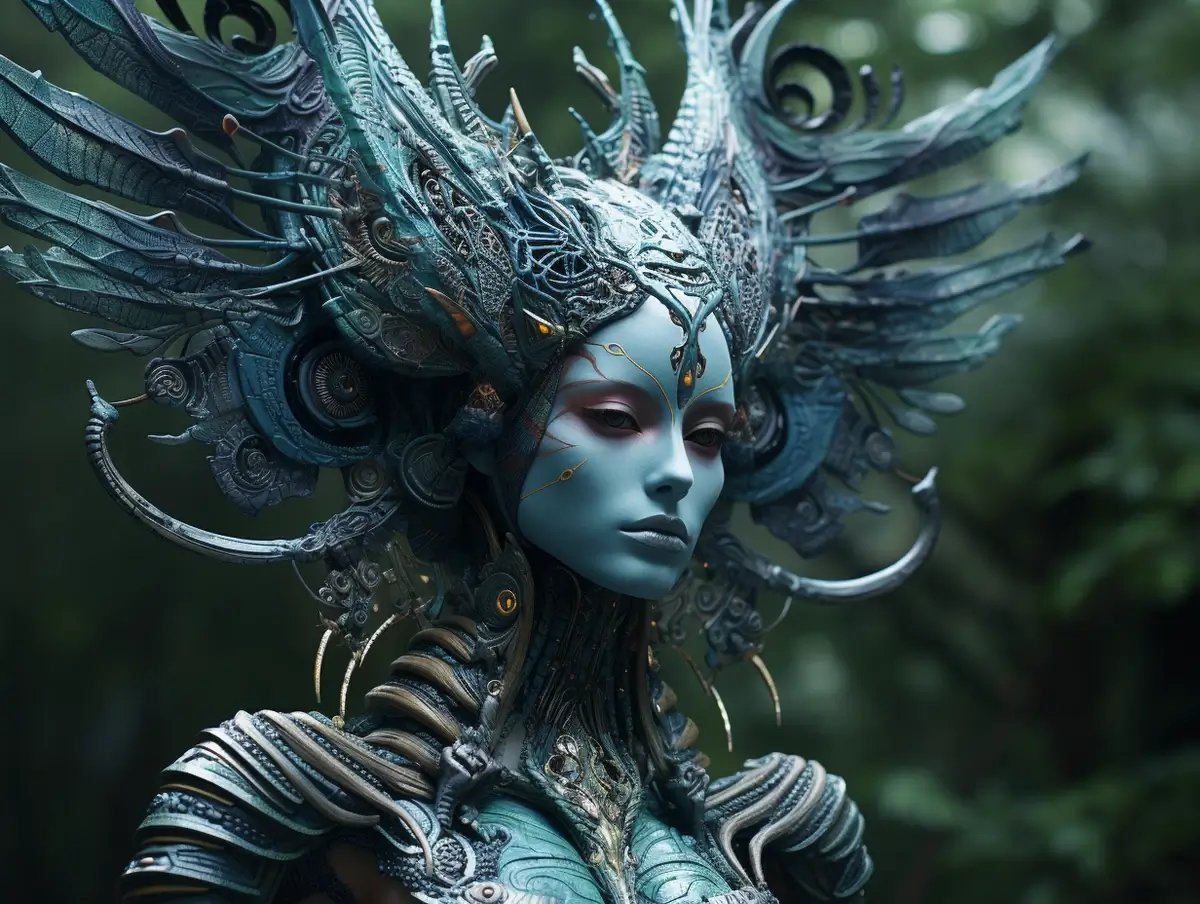
26. Beherit (Female Aspect)
We’re not talking about the Finnish black metal band, but about Beherit, a name synonymous with Satan or Beelzebub in some traditions. Often considered male, this demonic entity also has a female aspect in certain interpretations.
The female aspect of Beherit is akin to the dark, nurturing void from which malevolent energies are birthed. She’s like a Pandora’s box of cosmic horrors but without the box. A powerful symbol in occult practices, this aspect of Beherit challenges our notions of demonic gender roles.

27. Kali (depicted as demonic in some interpretations)
Hold onto your mantras, folks! Next up is Kali, a revered goddess in Hindu mythology. Now, before you say, “Wait a minute, she’s not a demon!” let’s be clear: while Kali is generally viewed as a divine mother and a goddess of destruction, some interpretations paint her in a more demonic light.
Kali is known for her fearsome form, complete with a necklace of skulls and a skirt of severed arms. In this role, she embodies the fearsome aspect of divine femininity and nature’s wrath. But remember, she’s also adored as a protective, motherly figure. Complex? You betcha!

28. Yuki-onna
From the warm, spicy lands of India, we’re making a cool shift to Japan. Meet Yuki-onna, the snow woman of Japanese folklore. Beautiful and ethereal, she’s the kind of woman who’ll literally leave you cold—because she freezes people to death.
Appearing in snowstorms, Yuki-onna is a half-demon, half-human figure who has inspired numerous ghost stories and legends. Her story blends tragedy, horror, and an undeniable allure. She’s basically Elsa from “Frozen,” if Elsa were super into murder.
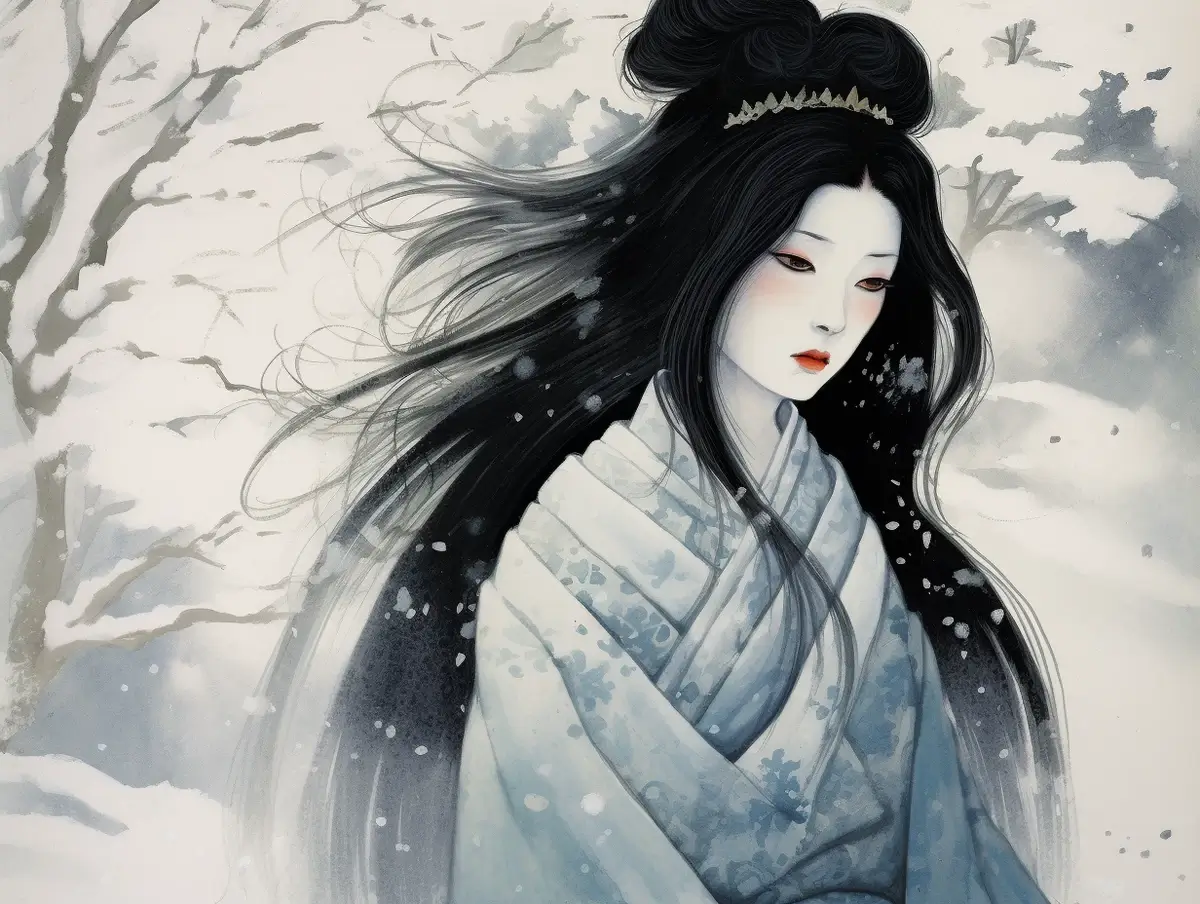
29. Empusa
We’re hopping back to Greece for this one, folks! Empusa is often considered a demigoddess or a demonic entity. Originally, she was one of Hecate’s minions, sent to terrify travelers. What makes her interesting? She has a leg made of brass and another made of donkey skin.
Empusa seduces young men and then drinks their blood and eats their flesh. Yeah, she’s got a lot going on. In later stories, she morphs into a shape-shifting monster, embodying several women’s fears and desires. Talk about multi-tasking!
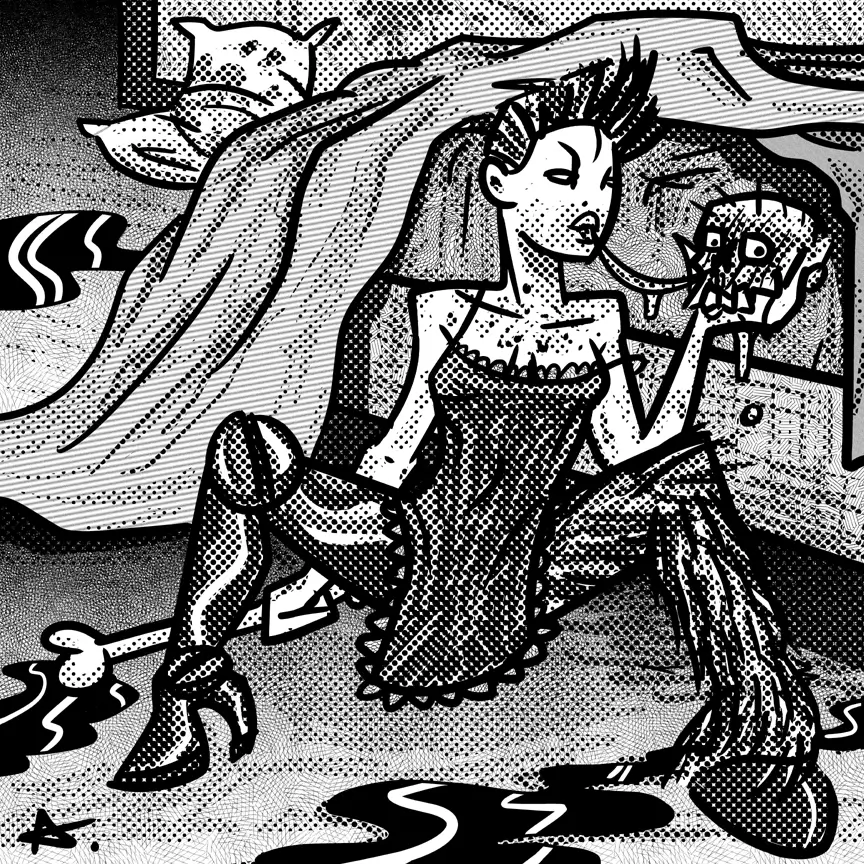
Image source: lenorasculture.wordpress.com
30. Cailleach
Cailleach hails from the British Isles, specifically from the annals of Celtic mythology. Often shown as a hag who personifies winter and death, she’s not your garden-variety deity. While not an outright demon, let’s just say she’s not someone you’d invite over for tea unless you’re keen on an eternal winter.
What’s fascinating about Cailleach is her duality. She’s a shape-shifter in the metaphoric sense, representing both destruction and creation. It’s like she’s got one foot in a spring meadow and another in a deadly blizzard. A complex figure, she showcases the multifaceted roles that powerful women often occupy in mythology.
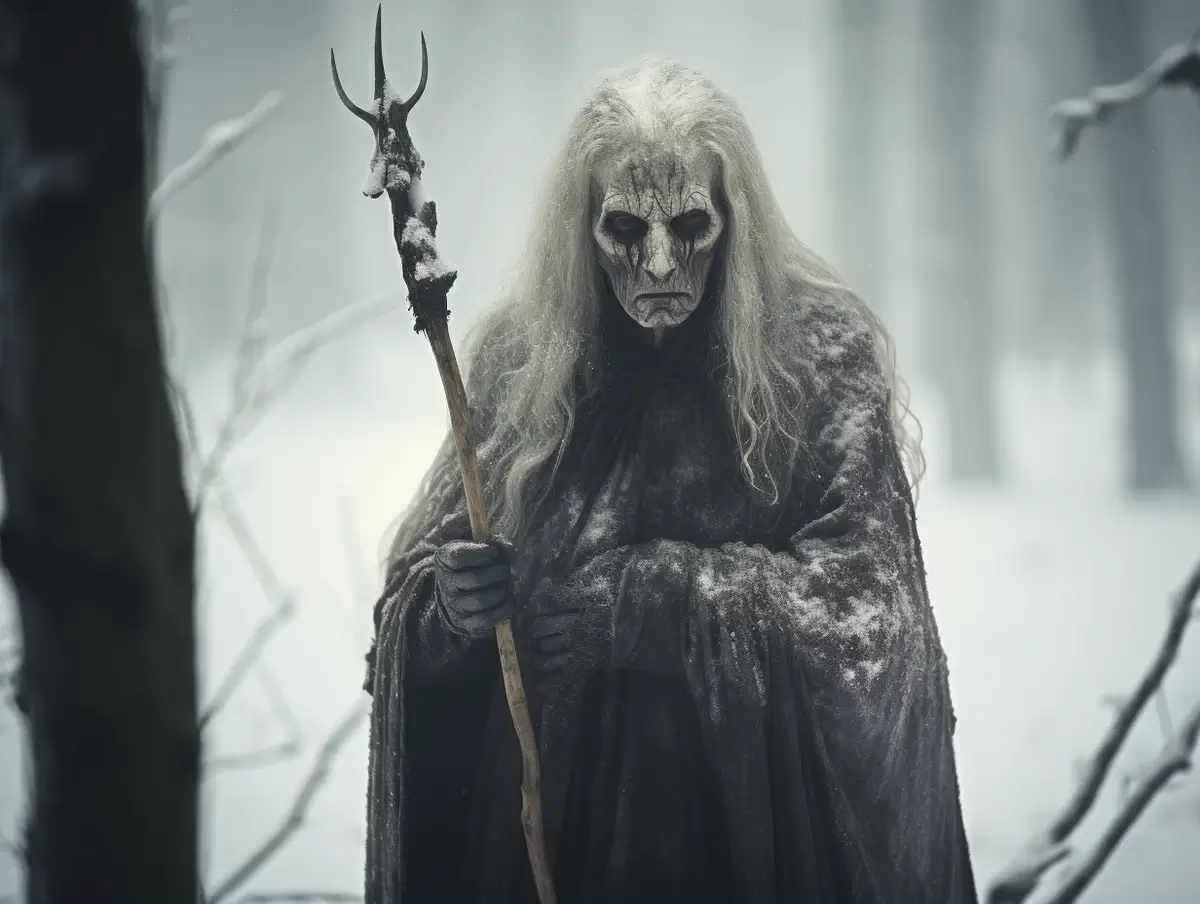
31. Aradia (sometimes considered a witch or demoness in folklore)
Now let’s delve into the world of Aradia, a figure wrapped in the gauzy layers of Italian folklore and Wiccan traditions. Depending on who you ask, she’s either a benevolent witch, a goddess, or a demoness. Talk about a complicated résumé!
Aradia is said to have been sent to Earth to teach oppressed peasants how to perform witchcraft to liberate themselves. So, she’s a bit of a magical revolutionary, fighting the good (or bad, depending on perspective) fight. Her name is synonymous with feminine power, witchcraft, and depending on the interpretation, a touch of the demonic.
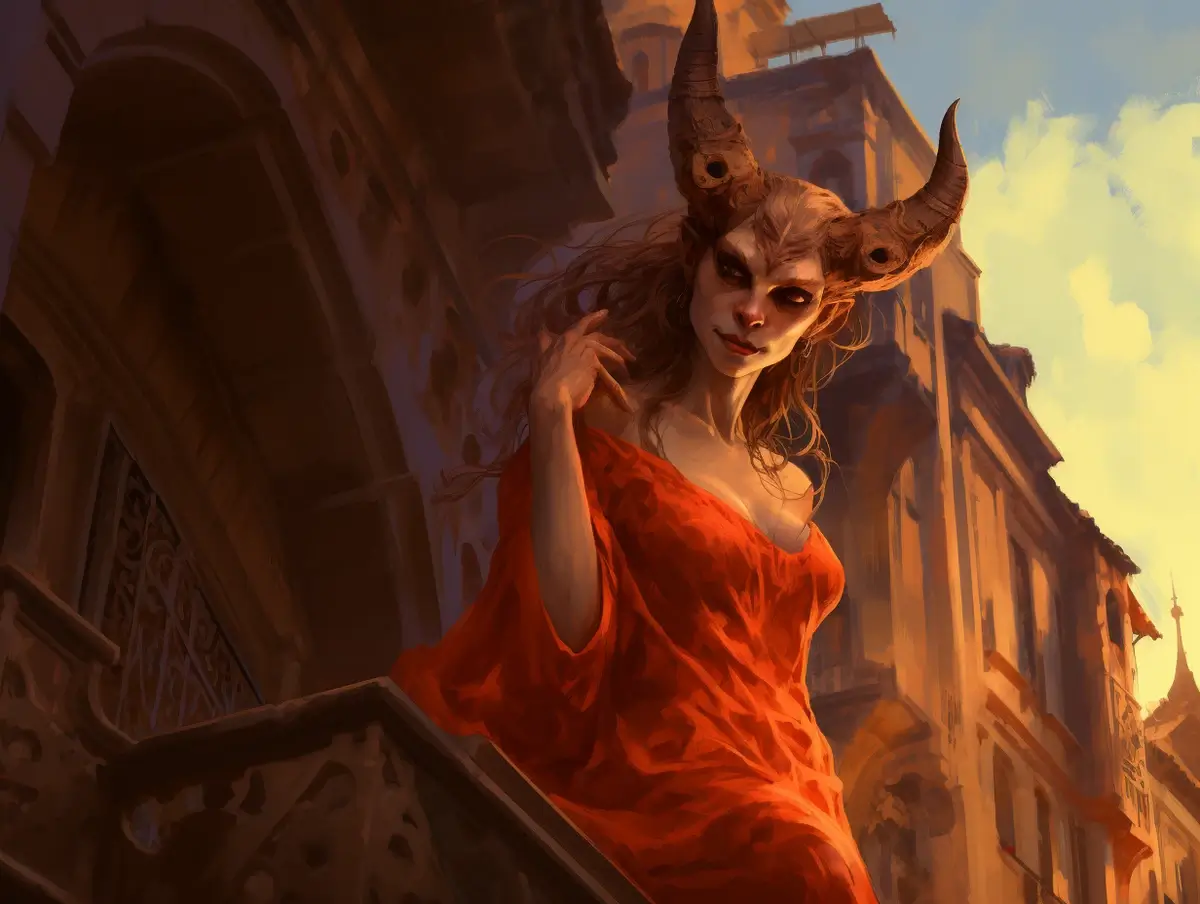
32. Gello
From the sunny Italian peninsula, let’s hop over to ancient Greece for our next demoness, Gello. Now, she’s no Gelato, but rather a child-killing, blood-thirsty demon. As the stories go, Gello was a maiden who died a virgin and returned to haunt families by causing the deaths of young children. Yes, she’s what nightmares are made of.
So how did people protect themselves? Ancient Greeks would use amulets and spells to ward off the evil doings of Gello. She’s an example of how societal fears can manifest into legends that scare the bejeezus out of people for generations.

33. Samael (Female Aspect)
Last but certainly not least, let’s talk about Samael. Now, don’t get confused; we’re focusing on the female aspect of this originally male demon. In various mythologies and religious texts, Samael is an archangel who also plays the role of a destroyer and accuser. Think of him as the “bad cop” of the angelic world.
However, Samael’s female aspect is often overlooked. In some interpretations, she serves as the balancing force to Samael’s masculine energy, encompassing destructive and chaotic aspects that are essentially feminine. She’s not your typical cookie-baking, PTA-attending archetype; she’s a celestial force to be reckoned with.
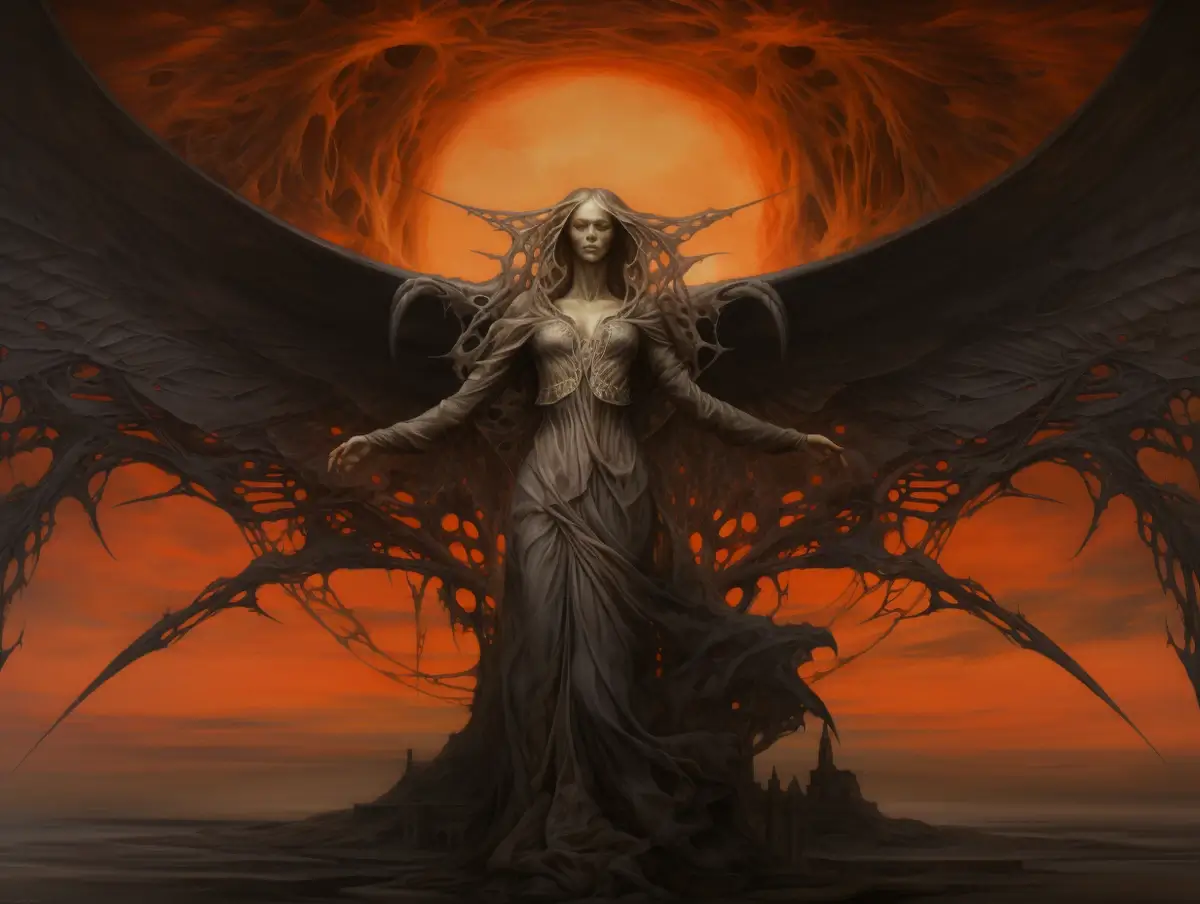
34. Tiamat
Tiamat hails from Mesopotamian mythology, and if you think your mother-in-law is a handful, you haven’t met Tiamat. Described as a sea goddess, Tiamat embodies chaos and gave birth to the first generation of gods. But don’t mistake her for just a baby factory for deities; she’s got a dark and twisty side.
In the epic of creation, the “Enuma Elish,” Tiamat wages war against her own divine offspring after they killed her mate, Apsu. She then transforms into a monstrous dragon-like creature, a primal force of nature and chaos. She’s not just a mom; she’s a ‘Momster.’
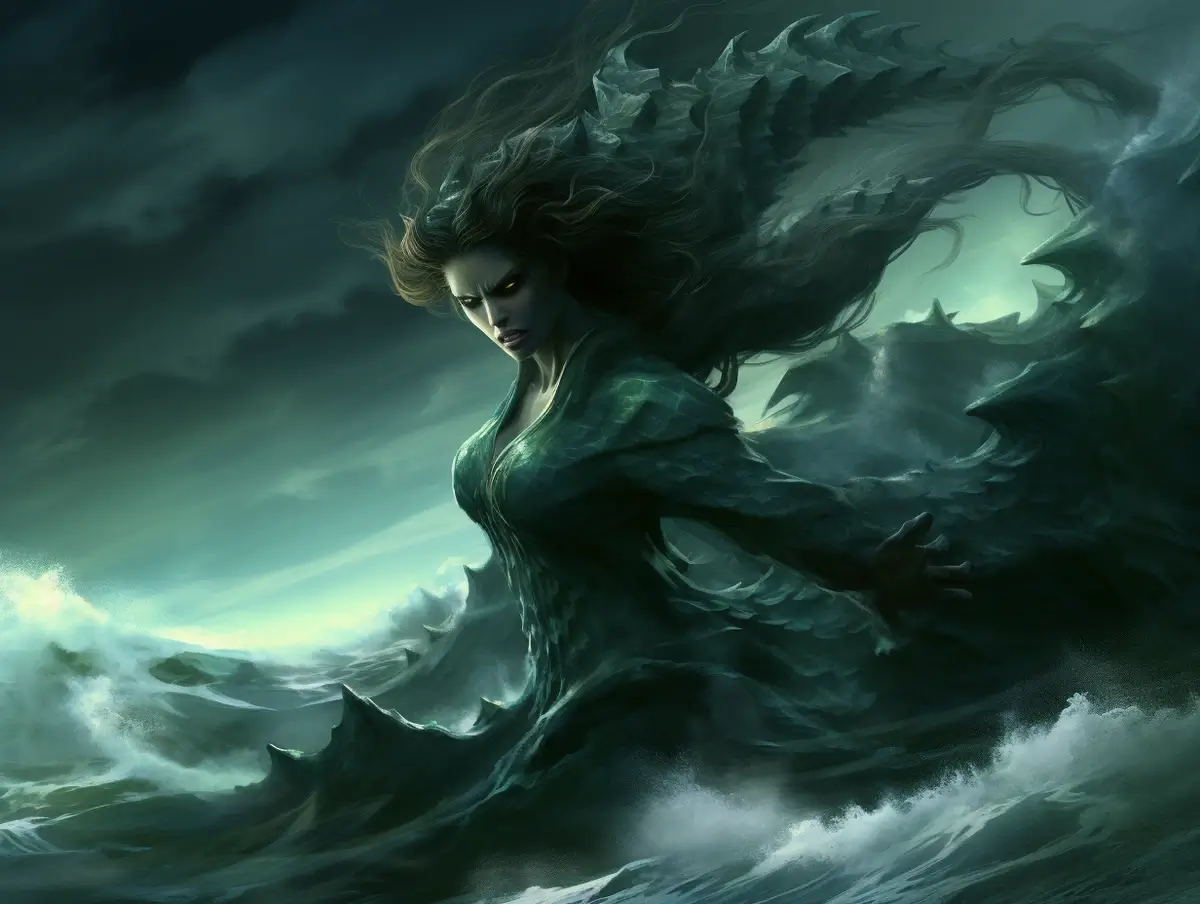
35. Bellatrix
Okay, Bellatrix might ring a bell for all you Harry Potter fans, but we’re not talking about that psychotic Death Eater. The name Bellatrix actually has historical roots in demonology. Derived from Latin, meaning “Female Warrior,” Bellatrix is a name associated with various demonic entities across folklore.
Though not as mainstream as some other names on this list, Bellatrix symbolizes the darker aspects of war and destruction, all wrapped up in an enigmatic female figure. So, she’s a bad girl, but in the more “I’ll lead an army into battle” sense rather than the high school rebel kind.

FAQ
Who is the strongest female devil?
The title for the “strongest” female devil can vary depending on religious or mythological context. However, Lilith often holds significant power in various belief systems, seen as a figure embodying independence, sexual freedom, and rebellion. She’s like the Beyoncé of the demon world, but don’t quote me on that!
What is the word for a female demon?
The word for a female demon is typically Demoness. This term is used across different languages and mythologies to describe a demonic female entity.
Who is queen of demons?
In Jewish folklore, Lilith is often considered the Queen of Demons. She is said to have been Adam’s first wife, who rebelled and left Eden to hang out with less judgmental beings. Talk about a nasty breakup!
Who is the god of evil female?
There’s no universally acknowledged “god of evil” who is female, but entities like Tiamat in Mesopotamian mythology or Kali in Hinduism (though not inherently evil) have darker, destructive aspects.
Who is the prettiest Demon Slayer girl?
The anime “Demon Slayer” has many beautiful female characters, but the term “prettiest” is subjective. However, Nezuko Kamado often takes the cake in fan polls. And let’s be honest, she is a cutie!
What is a Deviless?
A Deviless is a female devil, usually denoting a demonic entity with significant power and often linked with temptations or darker aspects of human nature.
What is a Demoness?
A Demoness is the female counterpart to a male demon. She usually embodies many of the same characteristics as her male counterparts but sometimes with unique twists, like seduction or maternal aspects turned sinister.
What is the meaning of demon queen?
The term demon queen generally refers to a female demonic entity that holds significant power and influence in the underworld. This could be a ruling figure or a consort to a demon king, but she’s definitely got VIP status down there.
Who is the goddess of all witches?
In various traditions, the goddess Hecate is often considered the goddess of witches. She rules over magic, necromancy, and the night. A triple threat, literally, as she’s often depicted with three faces.
Is there a female god of death?
Yes, there are several. In Norse mythology, Hel is the goddess of the underworld and death. In Aztec mythology, Mictecacihuatl is the Queen of the Underworld and the goddess of death. So if you’re into strong, independent women who can also usher you into the afterlife, you’ve got options!


